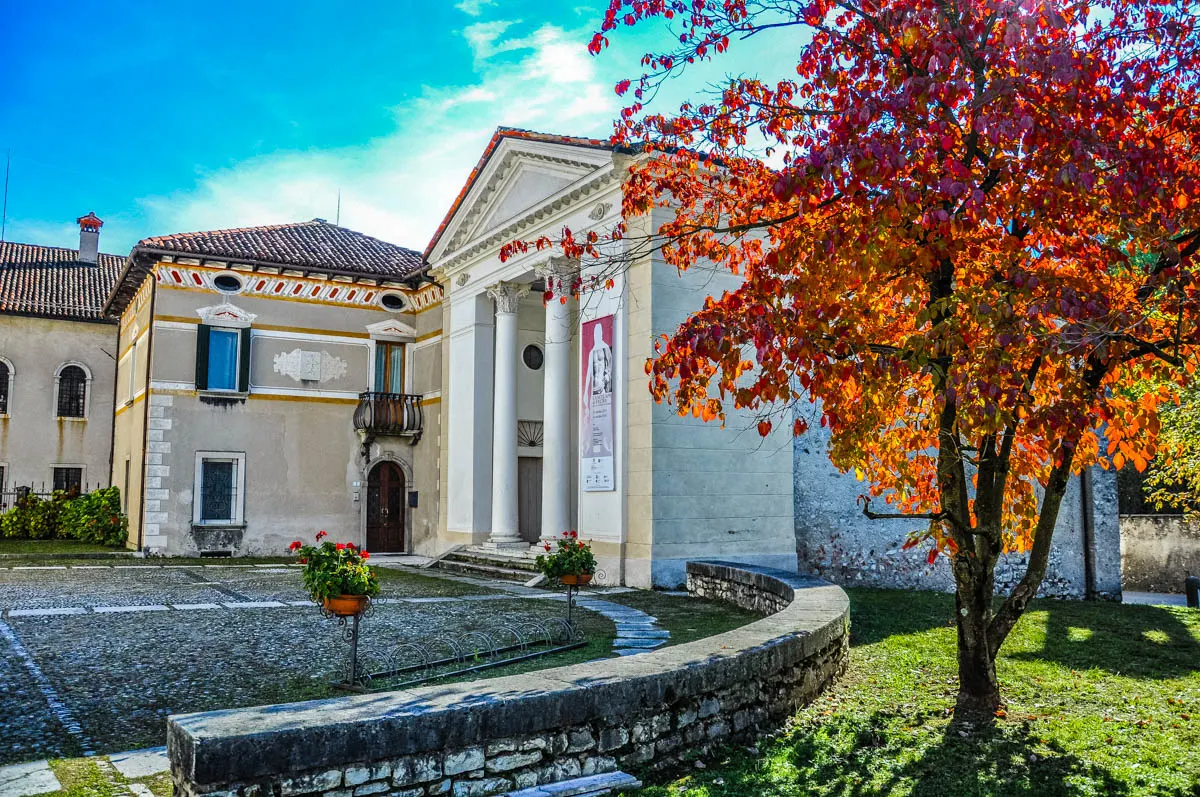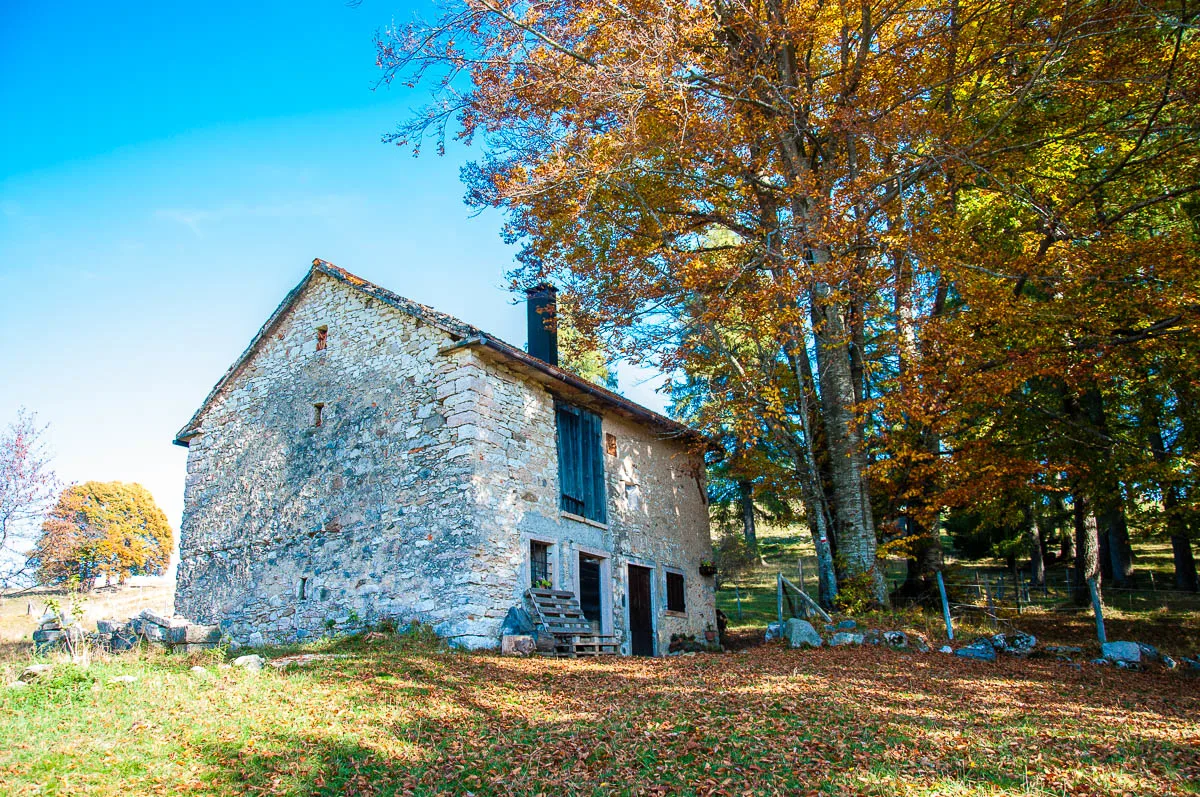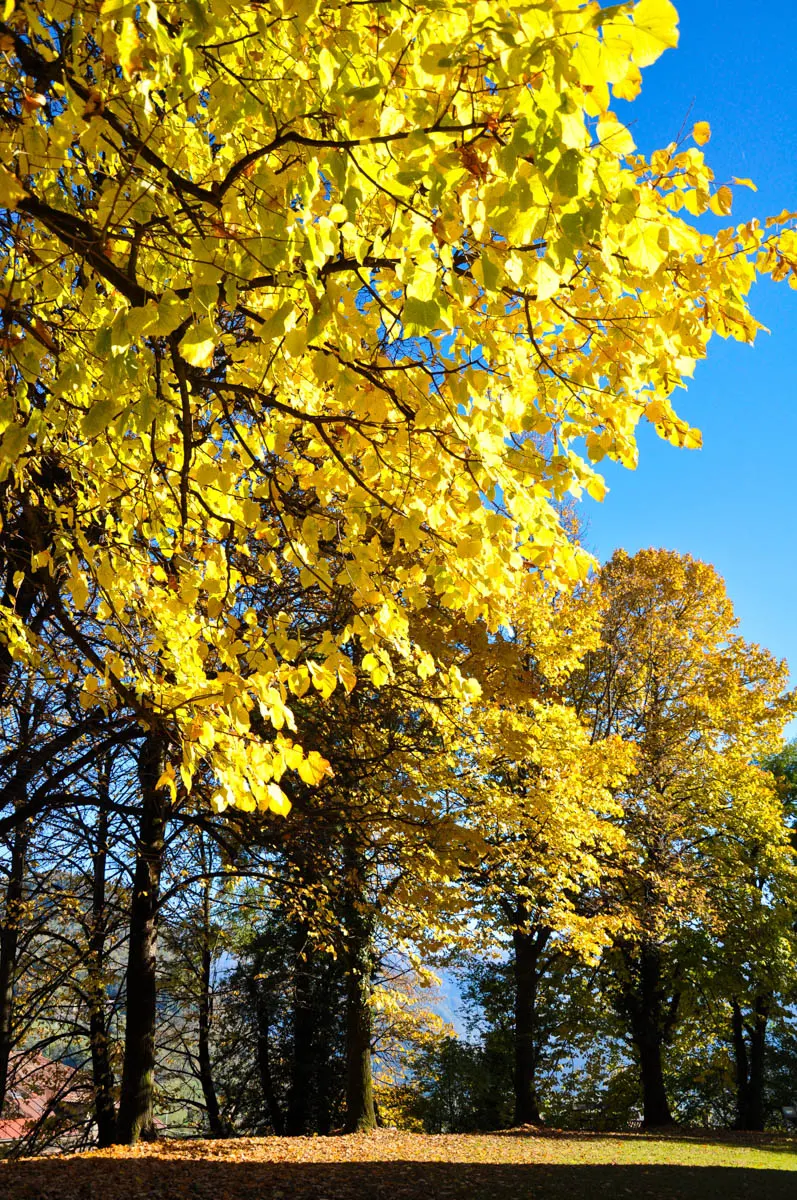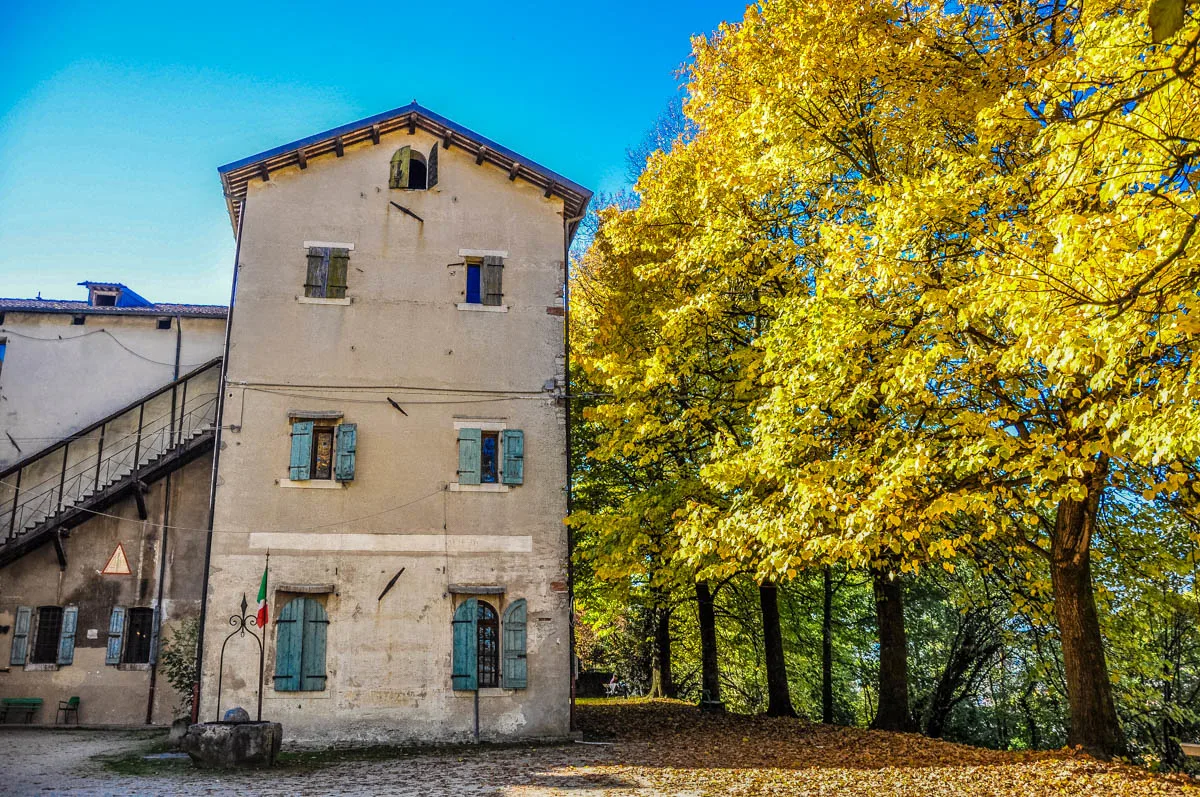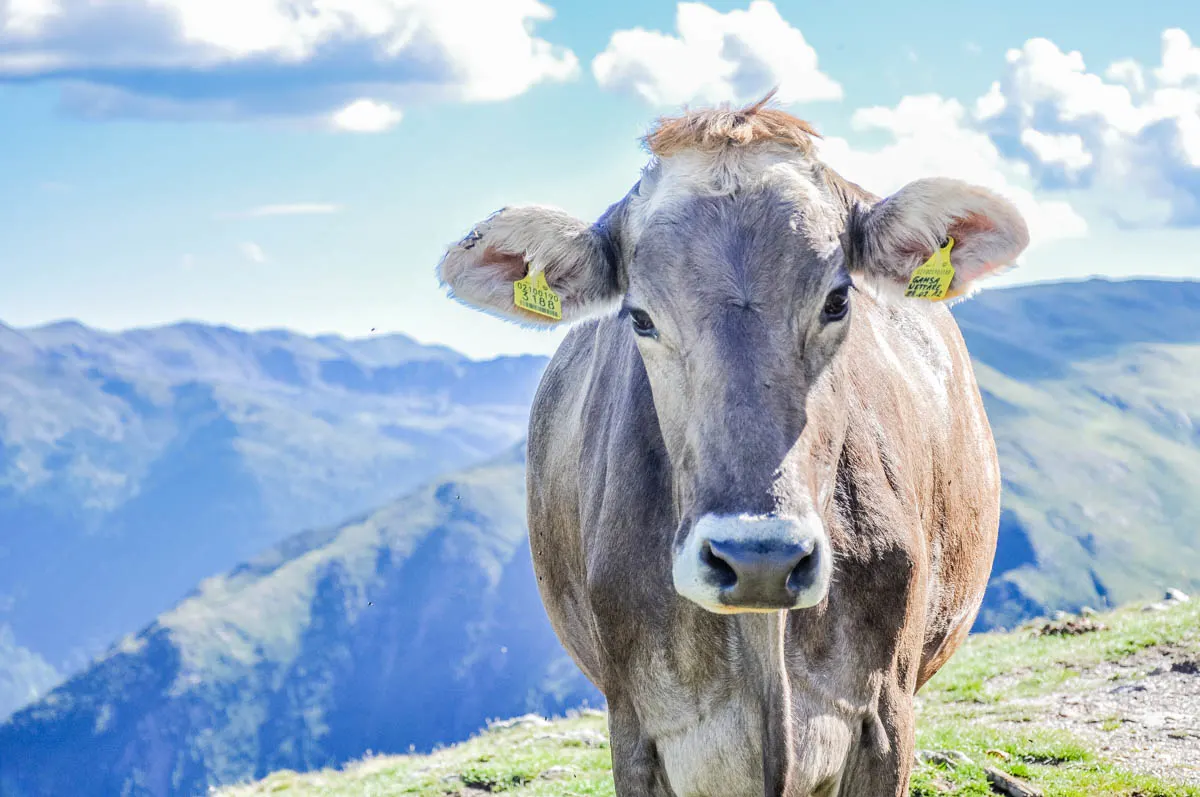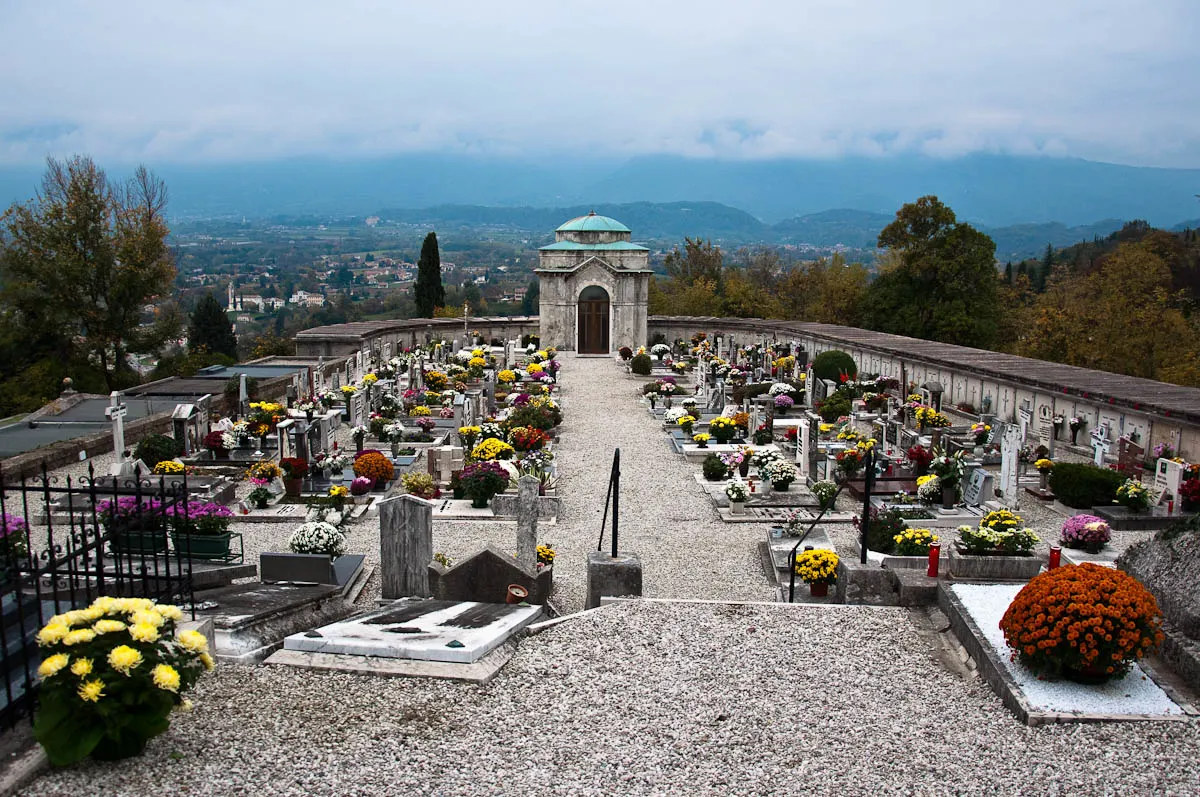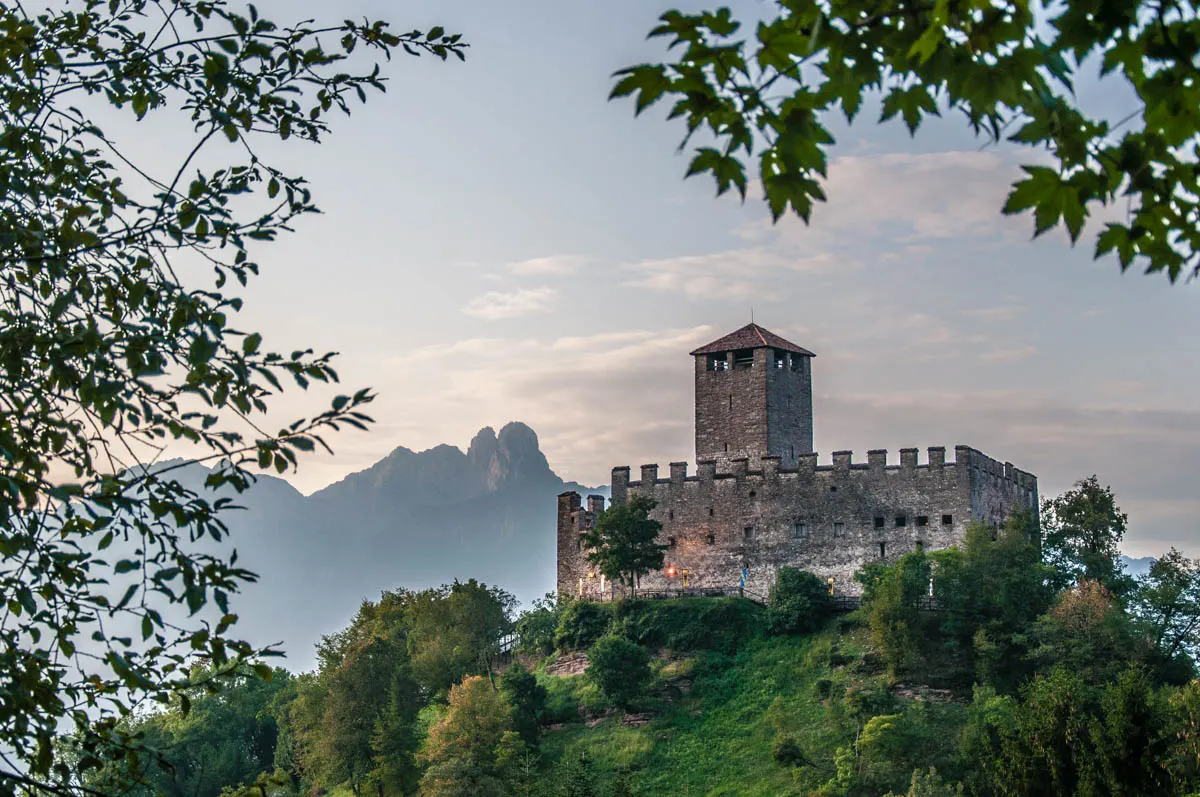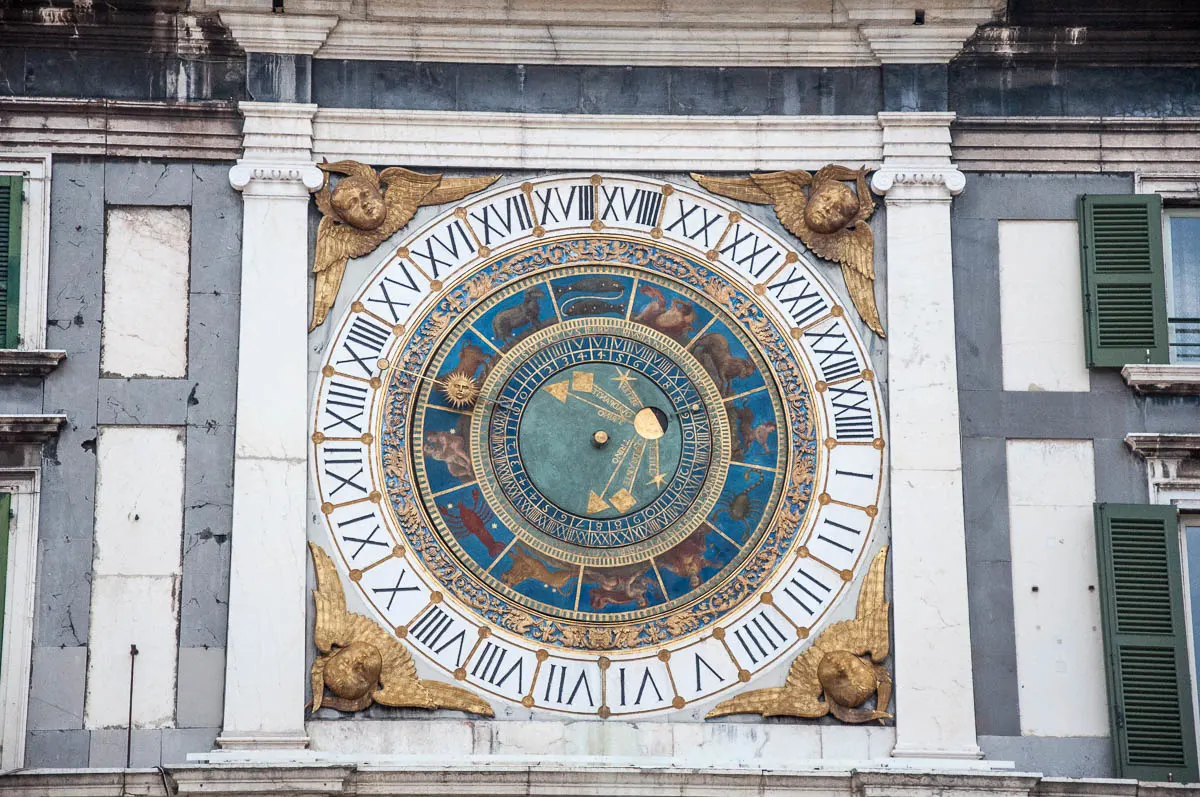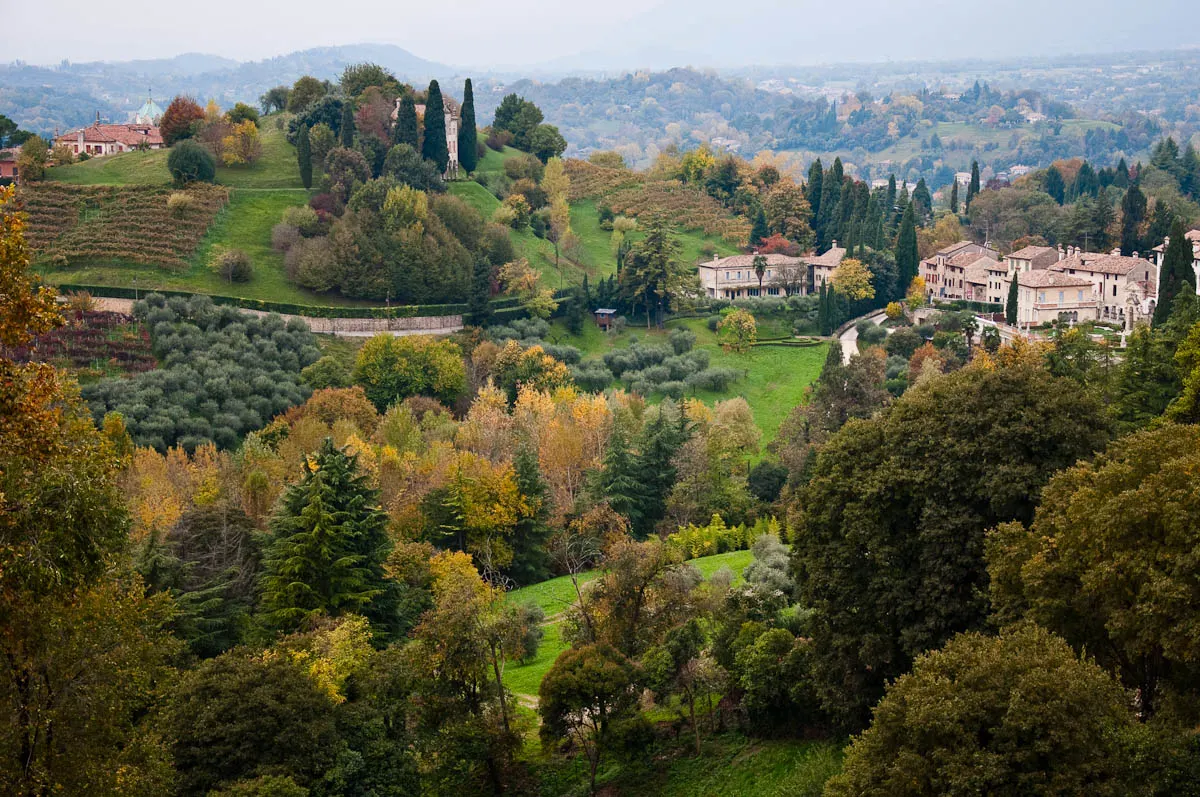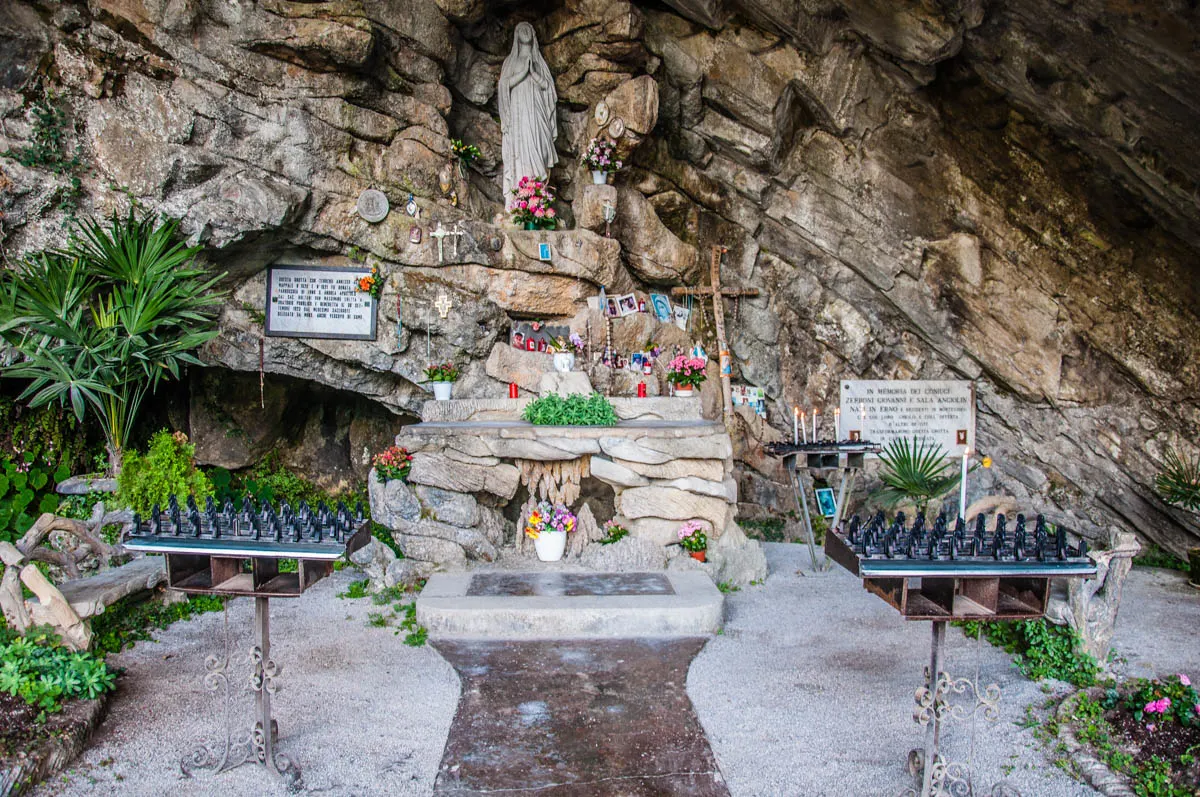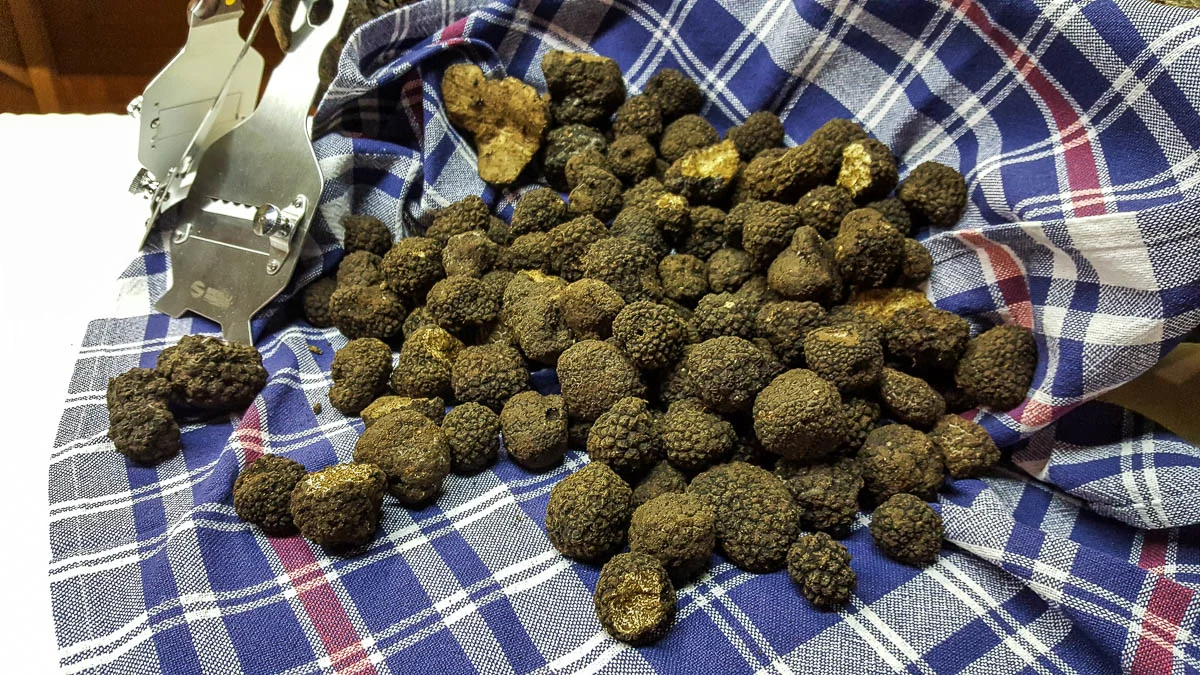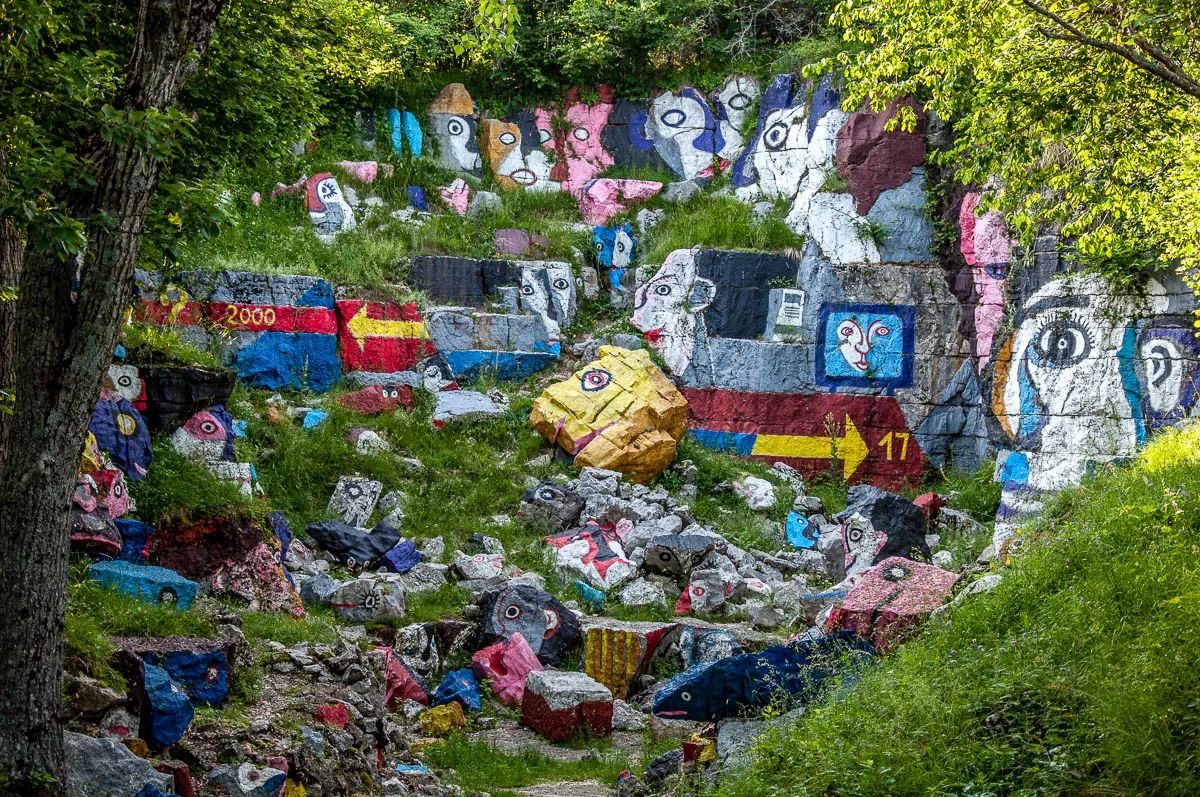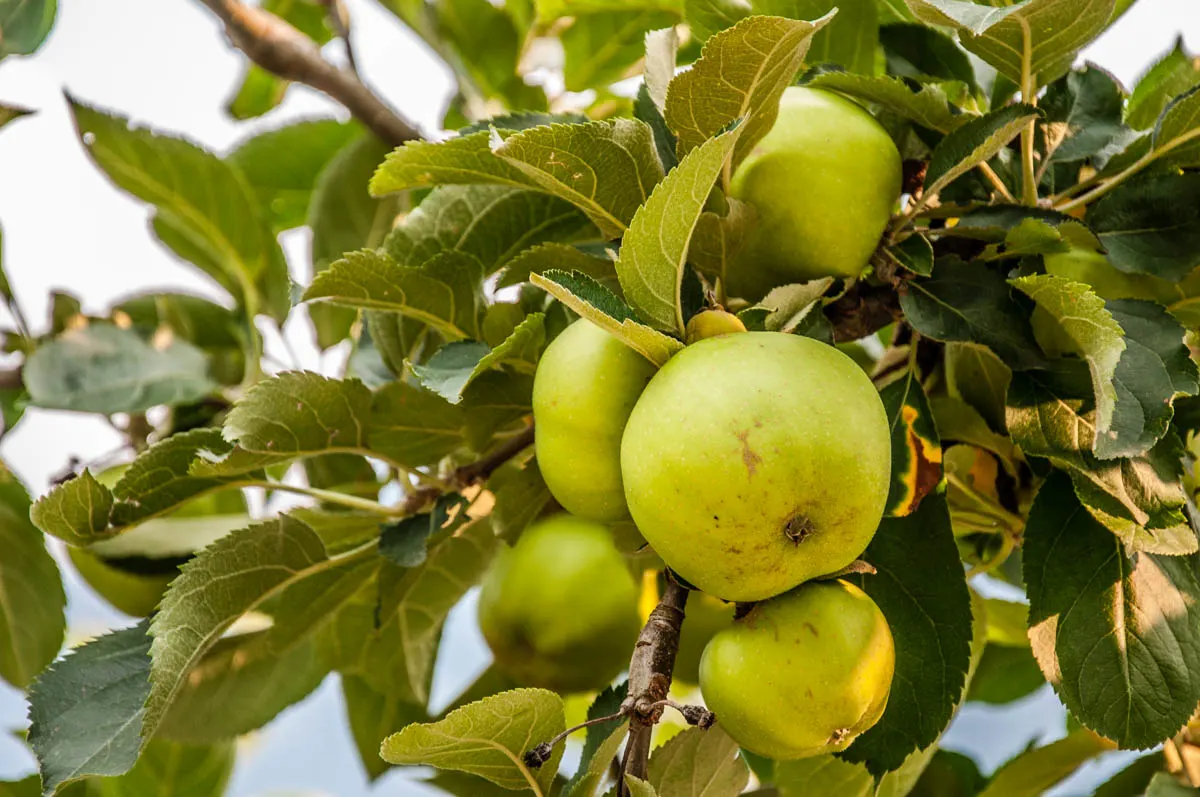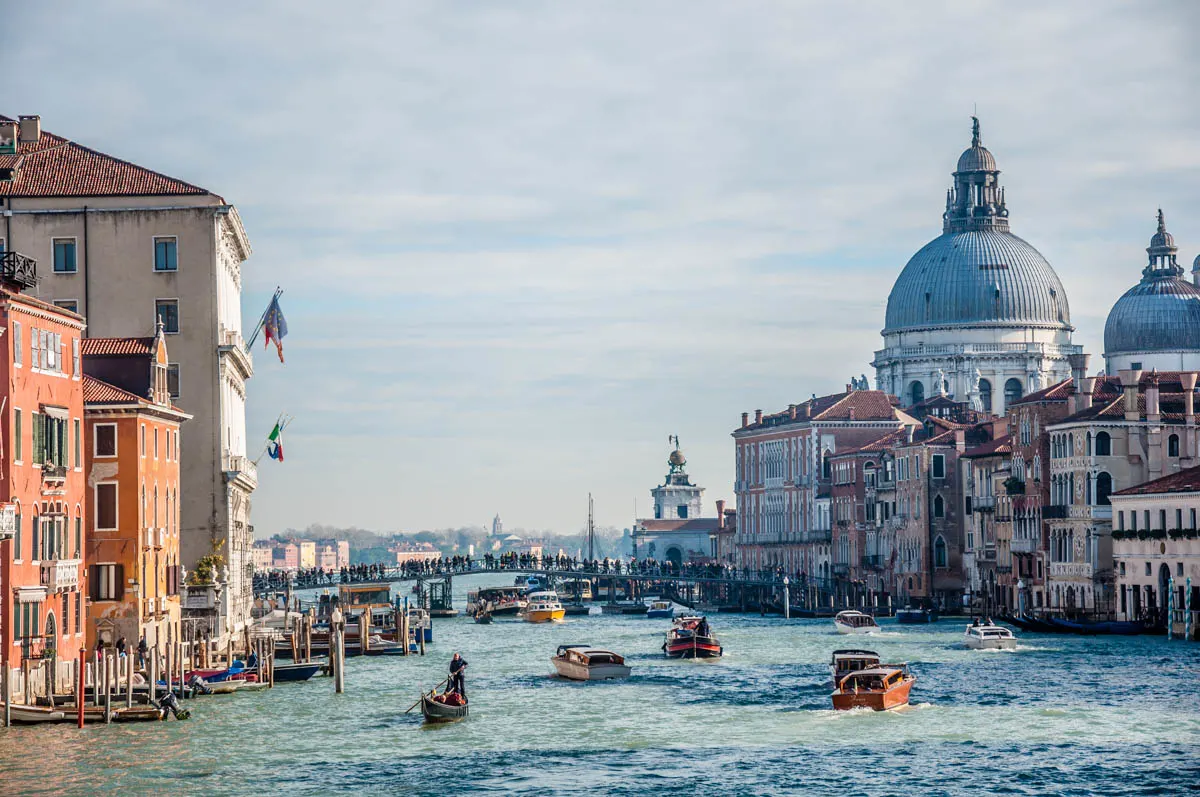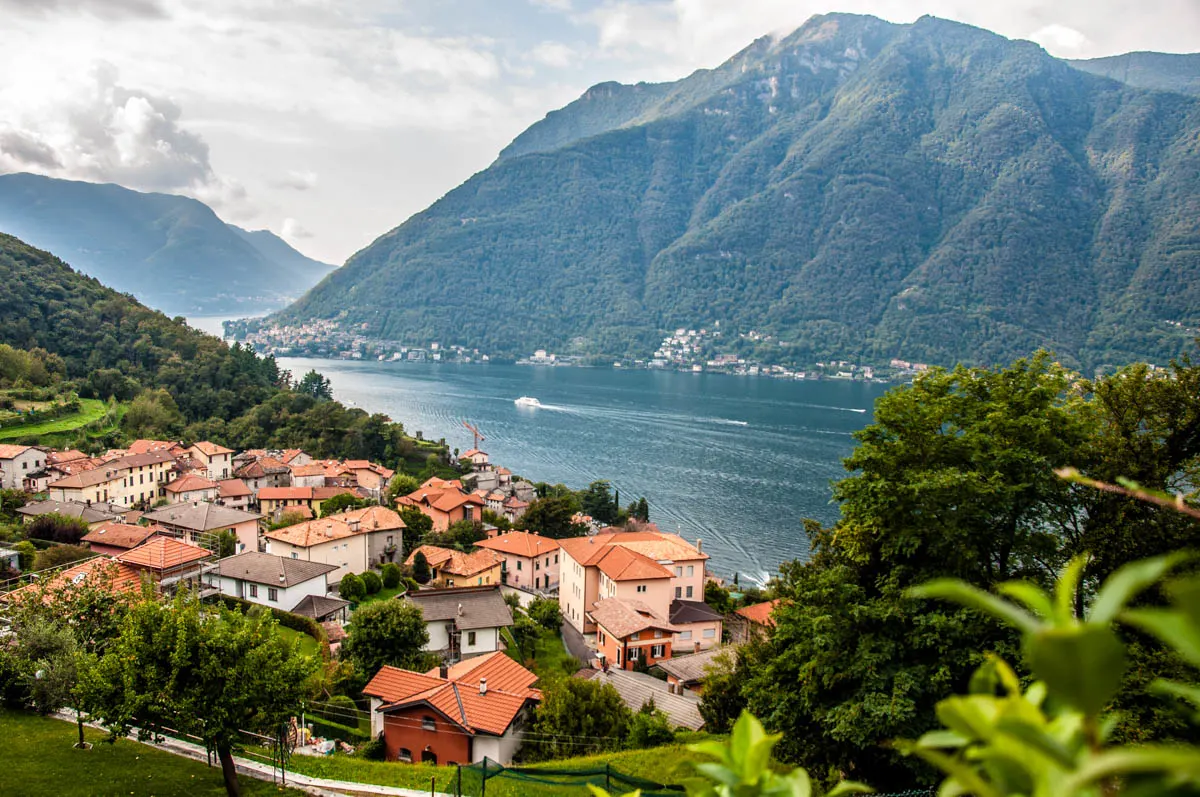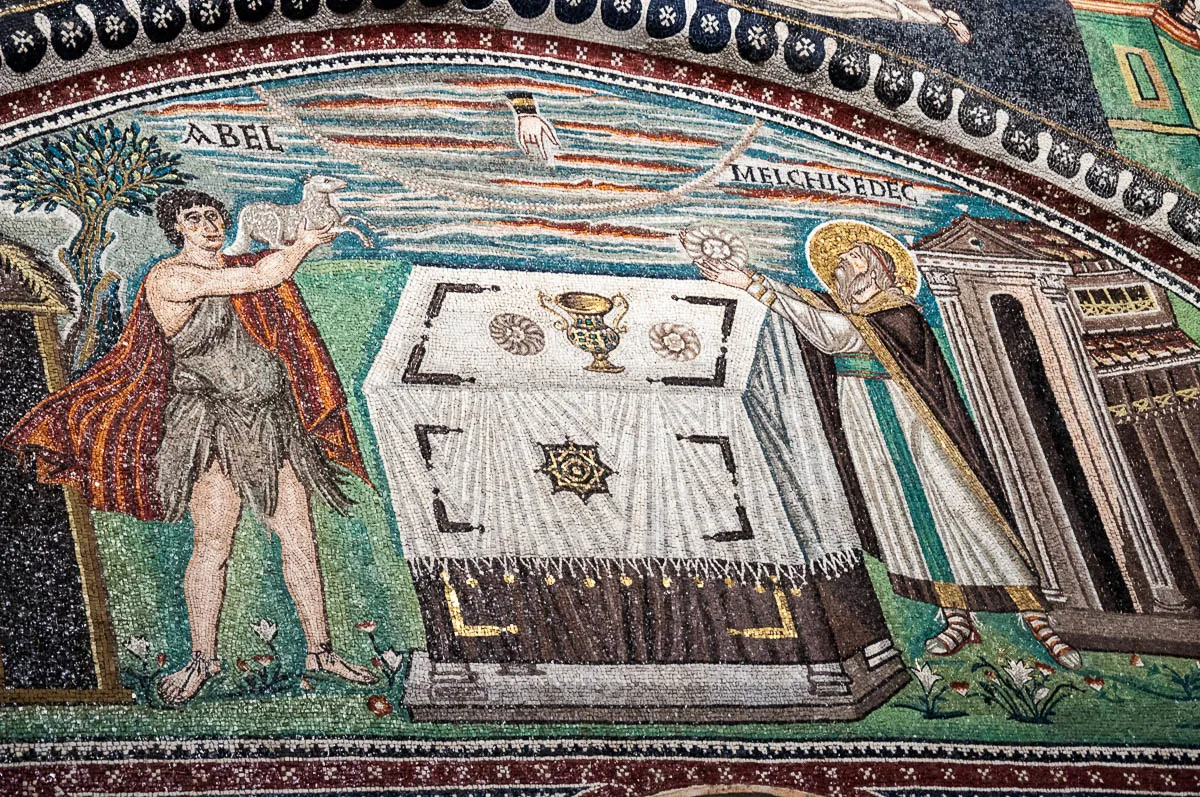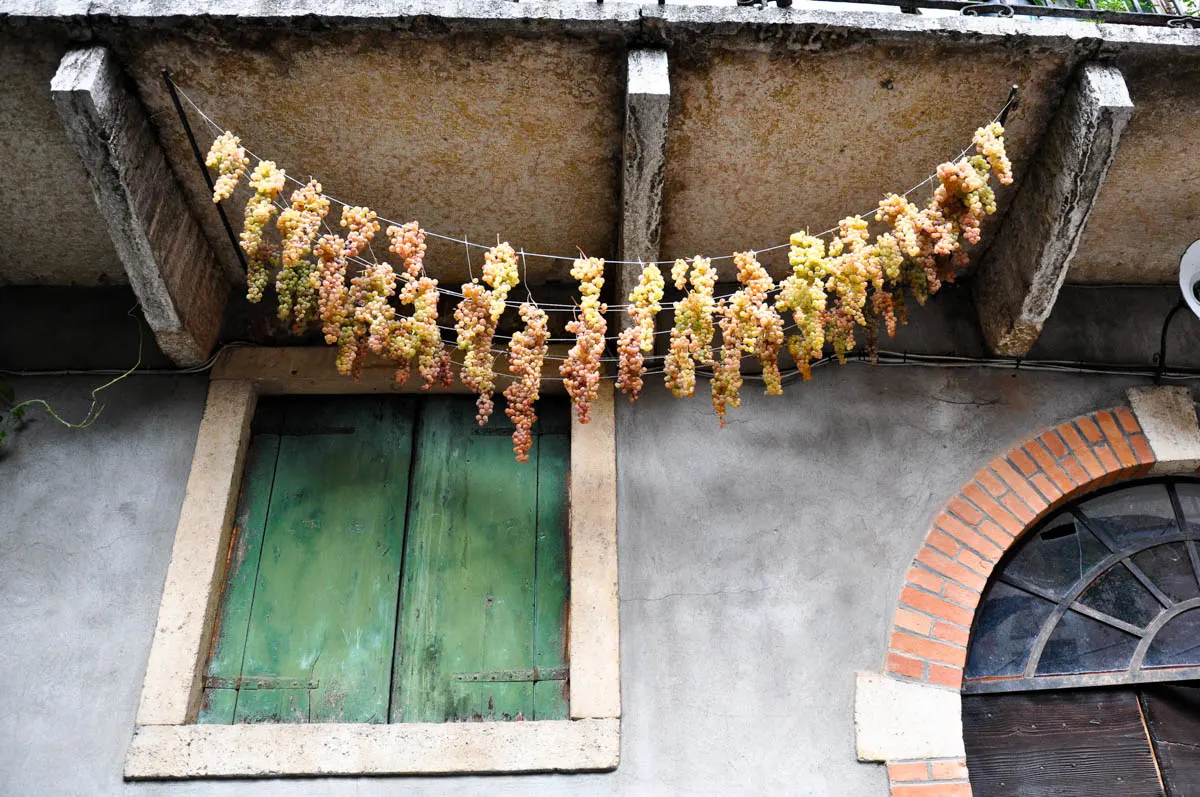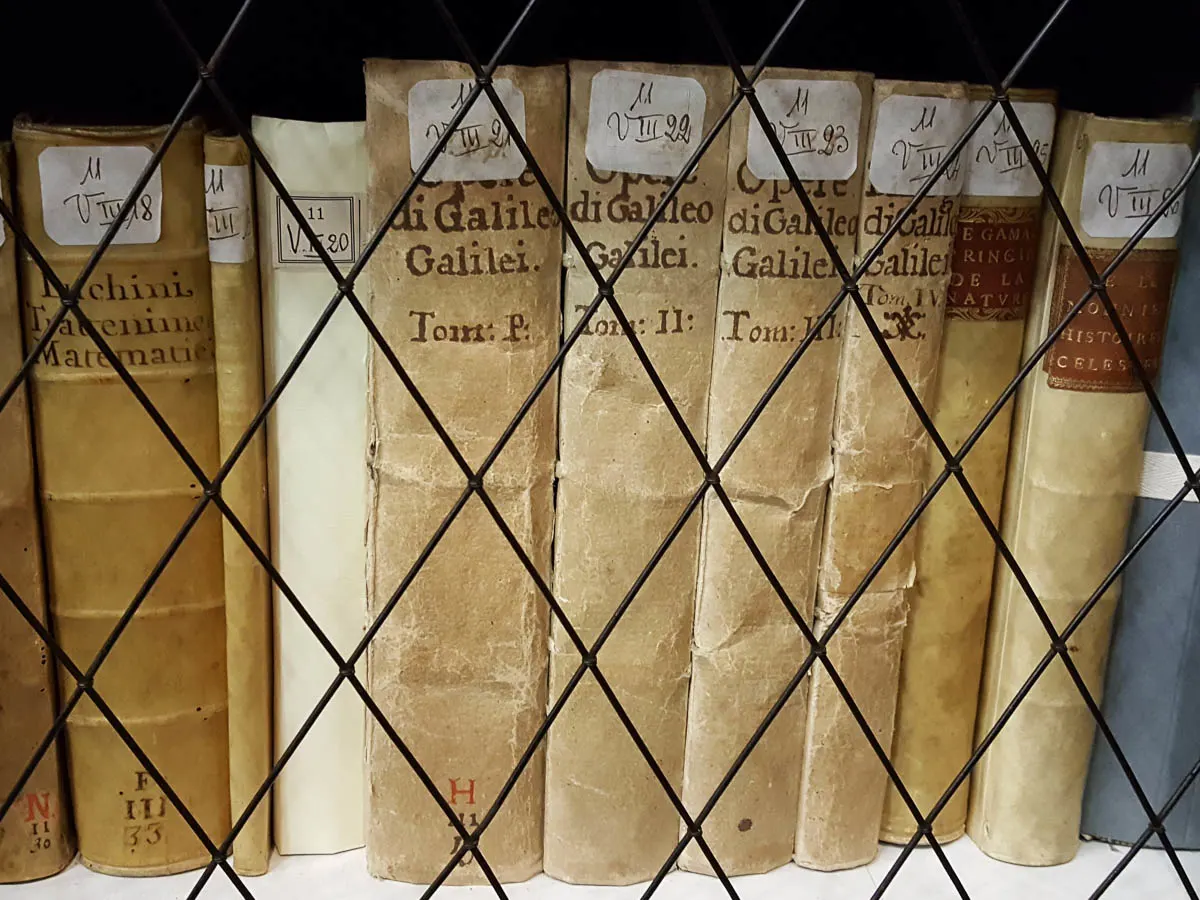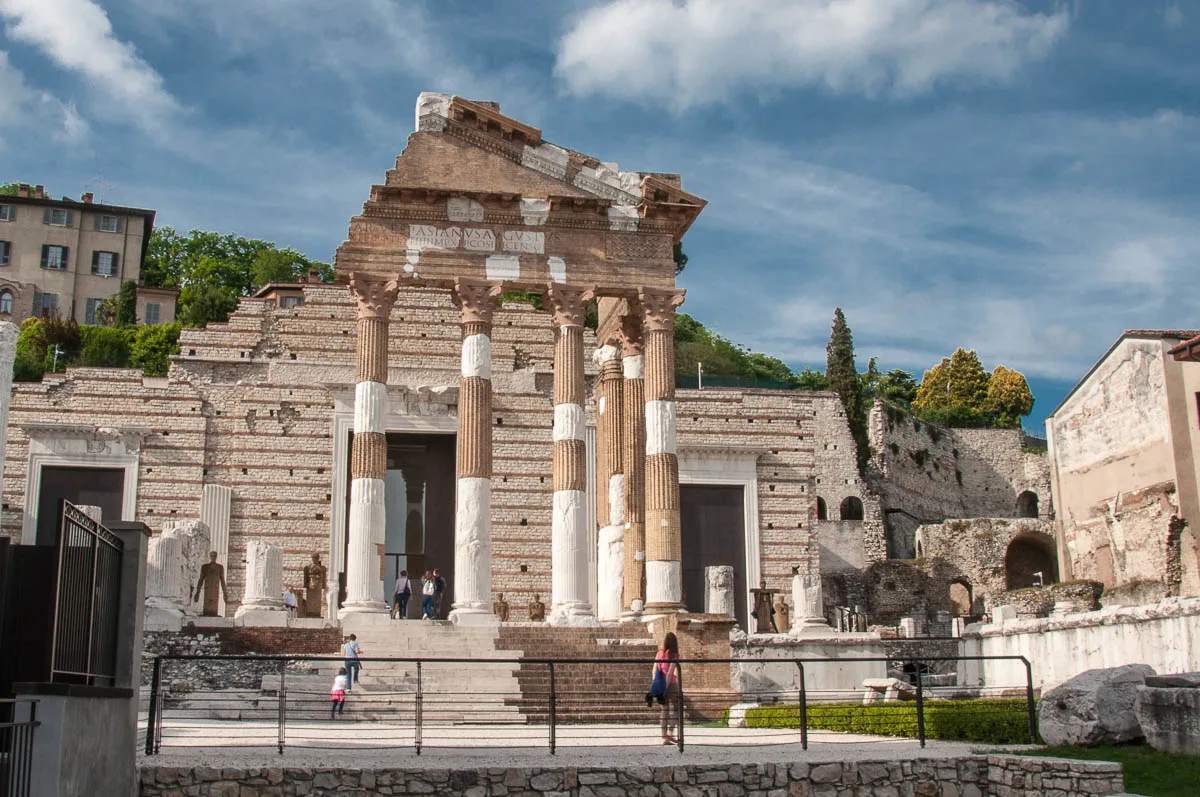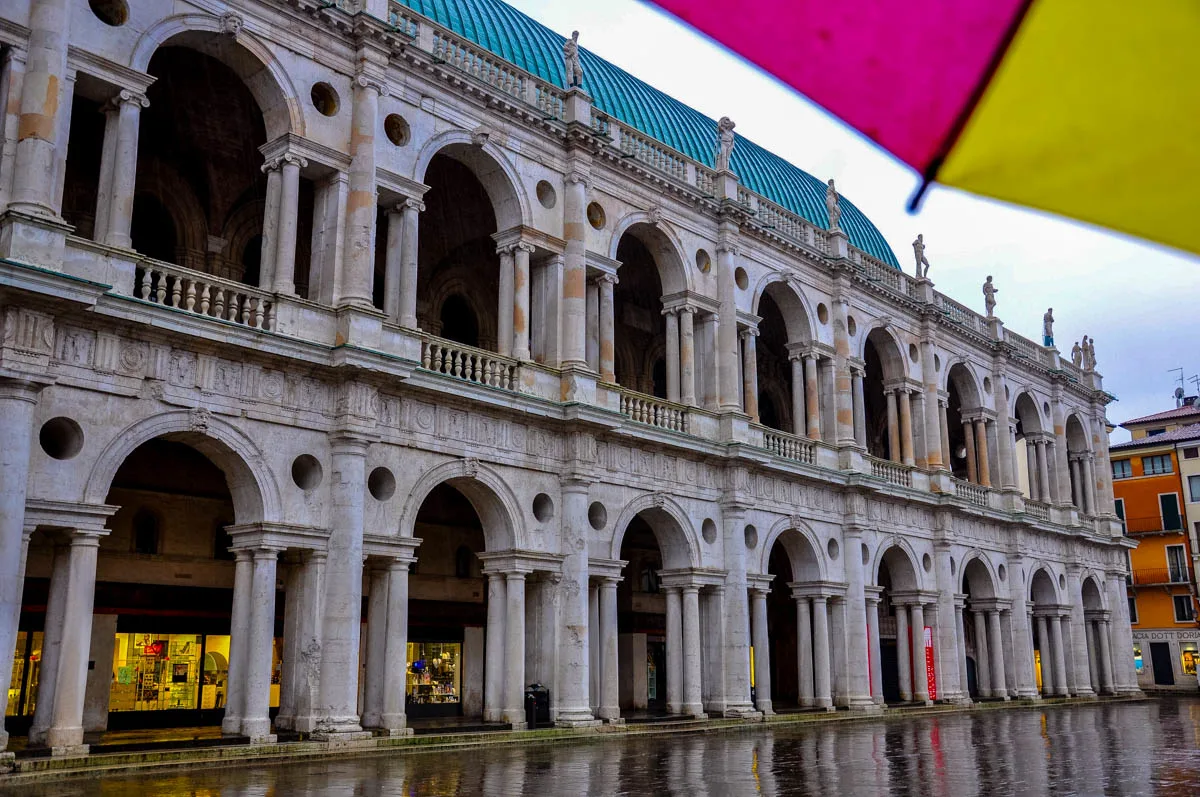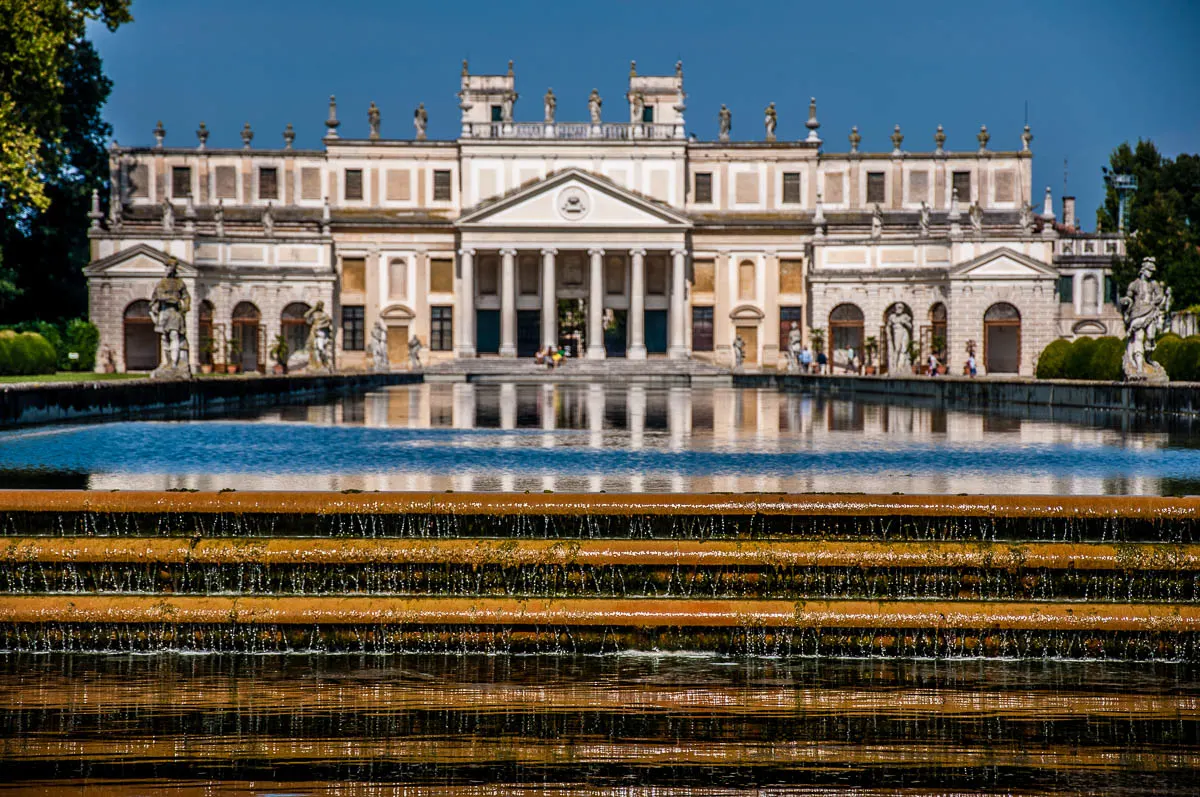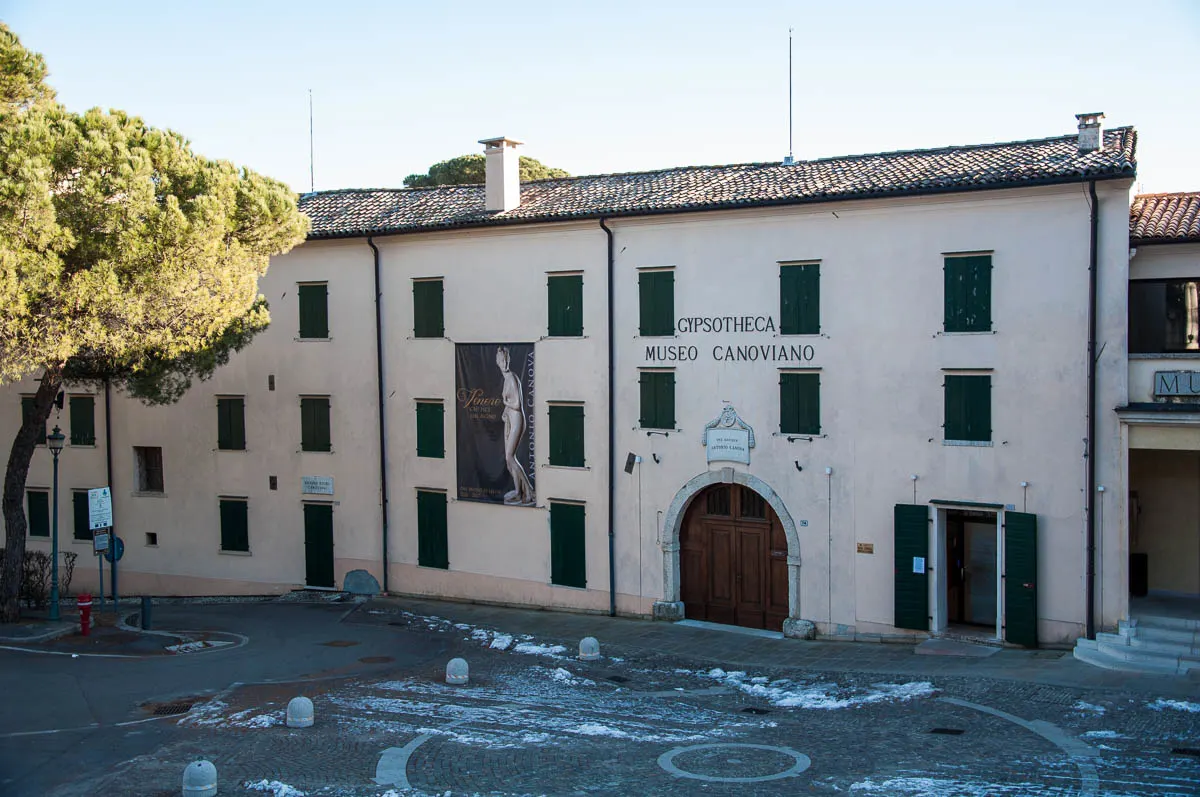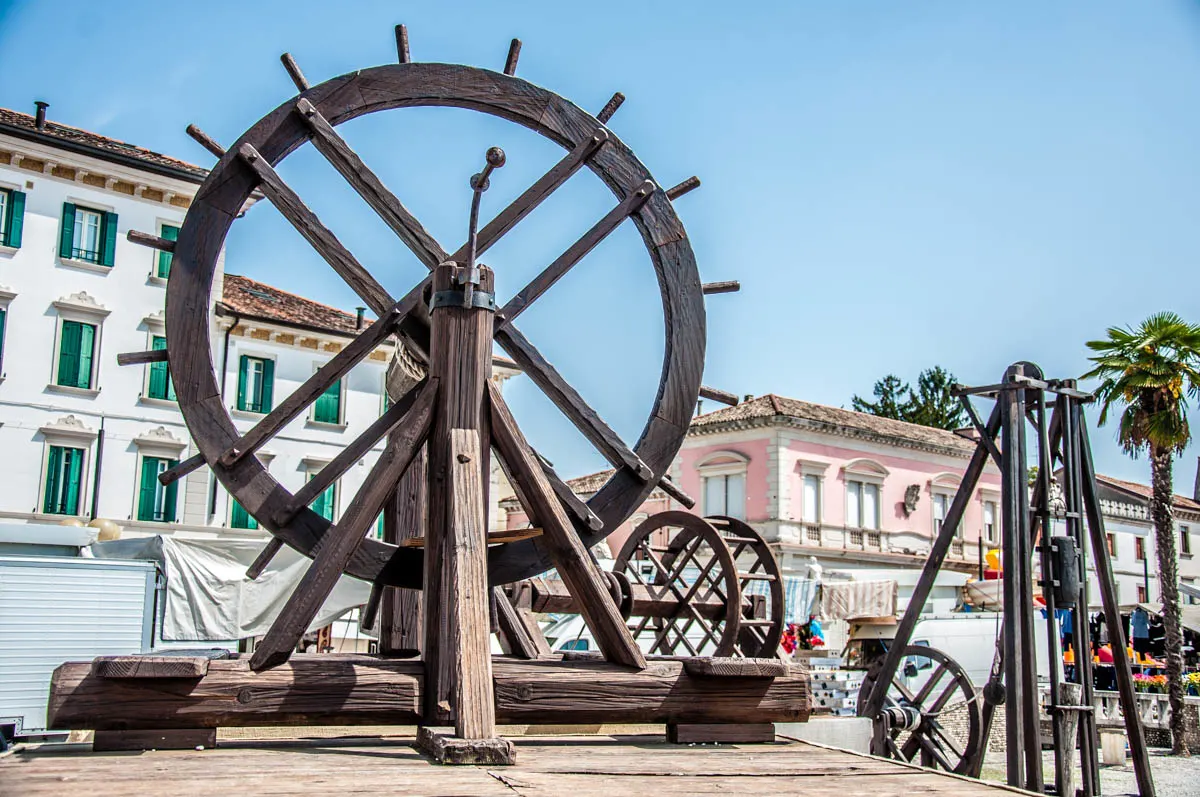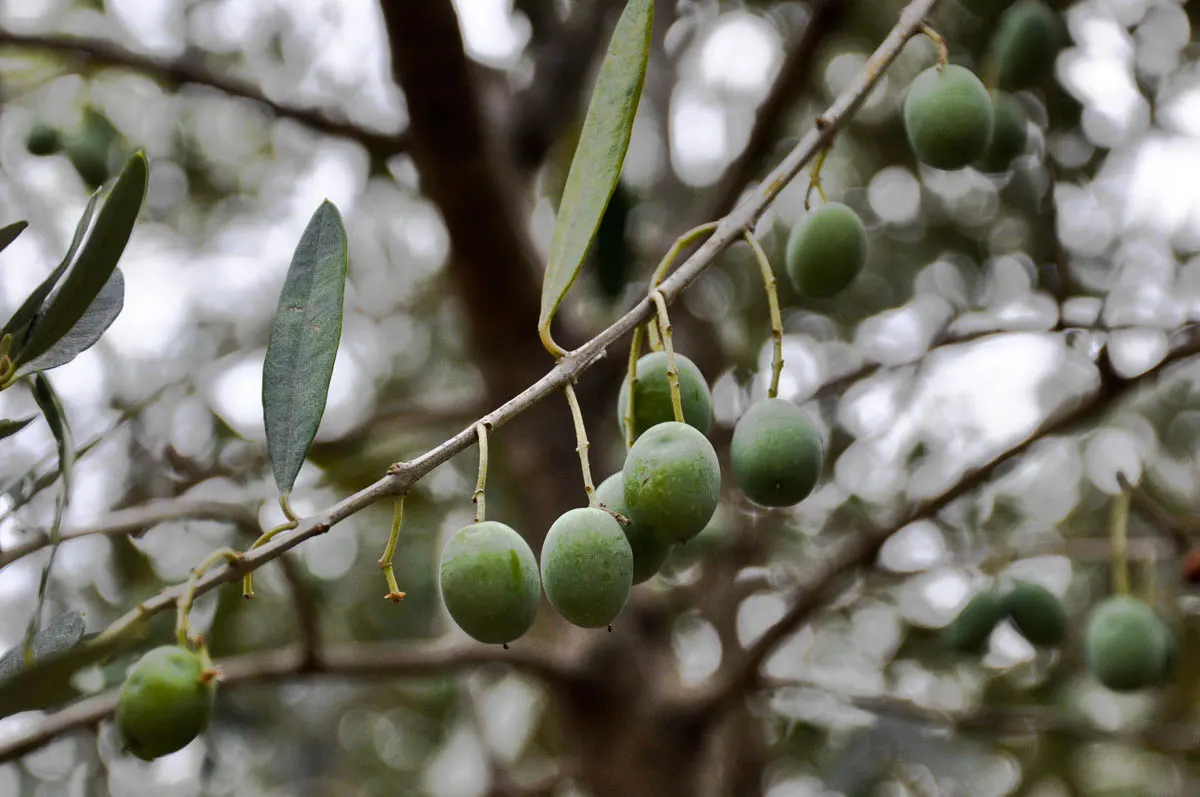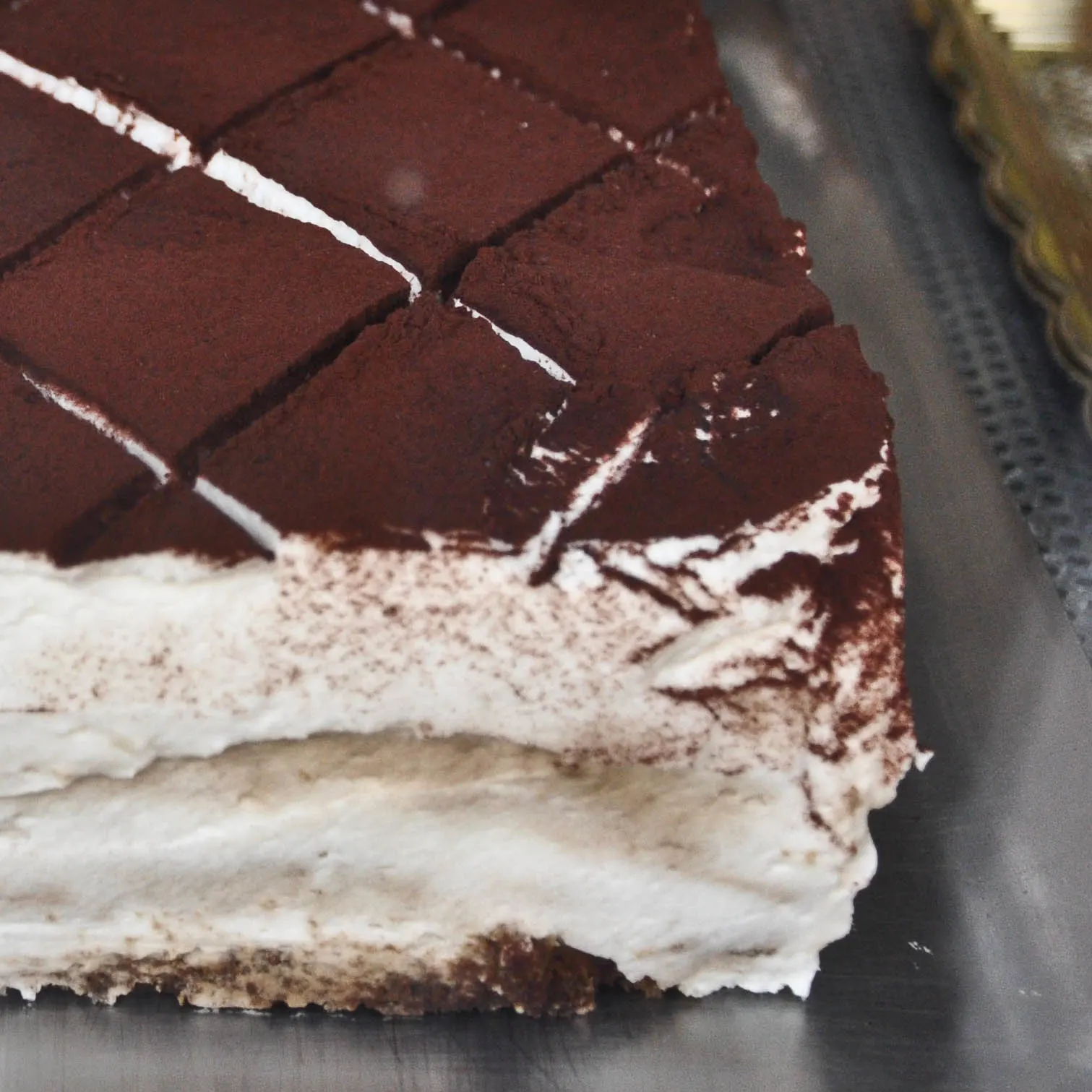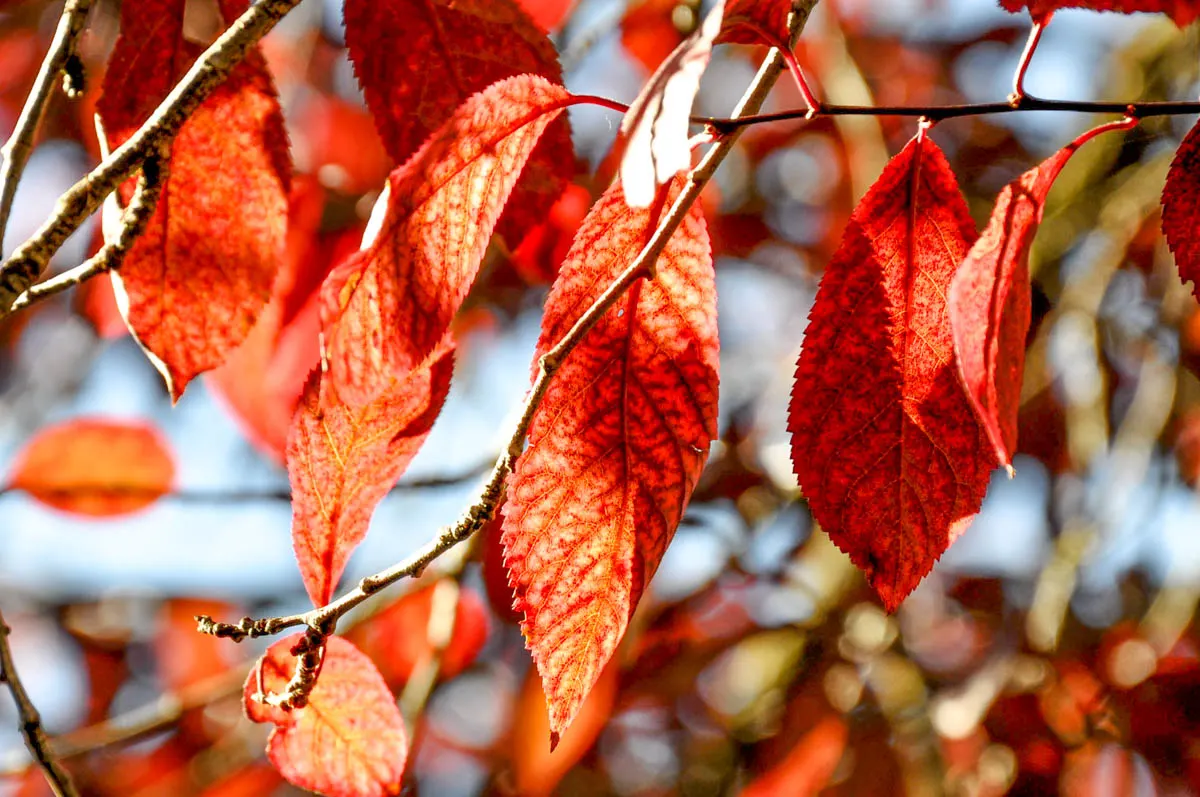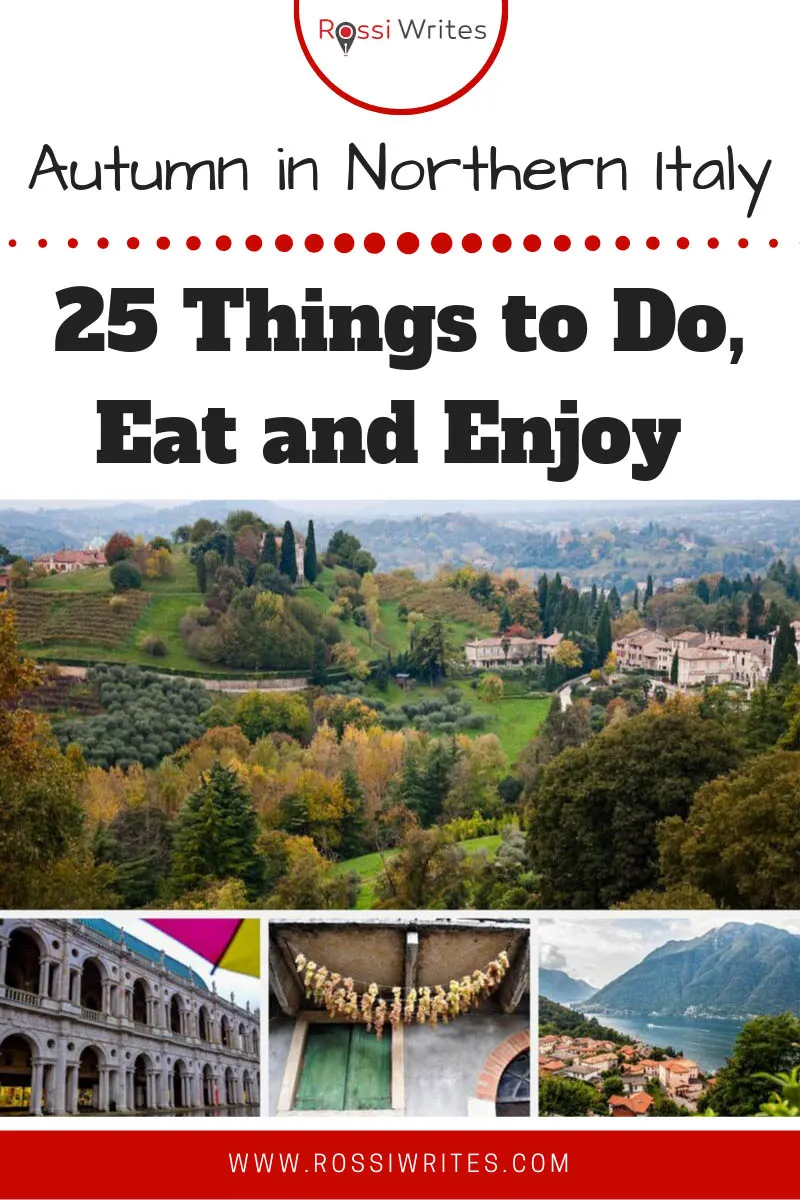Autumn is an amazing time to visit Northern Italy.
The sun is mostly still shining bright, the suffocating crowds of tourists have dispersed and a myriad of cultural, historical, and fun events are taking place in every large and small Northern Italian city and town.
How can you resist?! Well, you can’t and you shouldn’t. Take advantage of the low season and head to Northern Italy at the start, midst or end of autumn to enjoy the crisp air of the mountains, the smell of roasted chestnuts that takes over the piazzas, and the beautiful colours of the forests all dressed in bright yellows, deep golds, and rich russets.
At the same time, leave a space in your Northern Italian adventure to attend one or many of the festivals that happen every autumn here. Music, theatre, historic reenactments – all sorts of tastes and interests are covered.
Alternatively, spend time in the large bustling Northern Italian cities lost in people-watching and museum-exploring. Or enjoy quiet moments walking in the parks and gardens that surround the lavish castles, country houses, and historical villas dotted around the eight Northern Italian regions.
Be it mountains or cities, an art-filled break or a food-focused exploration, Northern Italy has it all. So, pick a base here, pack your best walking shoes and get ready to explore. To help you with your planning here is a nice and tidy list with 25 things to do, eat and enjoy this autumn in Northern Italy.
For ease of reference, all of the suggestions below apply to the astronomical season of autumn starting at the end of September and ending in the second half of December each year.
The lists with 25 things to do, eat and enjoy in Northern Italy in winter and spring are just a click away. Please, have a look at them, too as many of the suggestions in them are applicable to any season.
One more thing to get out of the way before we dive in. Geographically, all of the suggestions below refer to the eight Italian regions that together comprise the body of Northern Italy. They are Aosta Valley, Piedmont, Liguria, Lombardy, Emilia-Romagna, Veneto, Friuli-Venezia Giulia, and Trentino-Alto Adige (South Tyrol).
Now, let’s start!
25 Things to Do, Eat and Enjoy This Autumn in Northern Italy
1. Fall in Love with Foliage
The best thing about autumn in Northern Italy are the rich colours that the local mountains and forests get dressed in. Yellows, golds, oranges, reds and russets are offset by the evergreens of the coniferous. It all makes for a stunning natural display, a true visual delight that makes you reach for the camera to try to commit it all to digital memory.
Should you find yourself in Northern Italy in autumn, make sure that you spend some time in its forests and mountains just taking the riot of colours in. The autonomous region of Trentino-Alto Adige is particularly famous for its mountainous landscapes. Other great destinations for autumnal hikes and walks are the Dolomites in the Veneto and the Italian Alps in Piedmont.
Yet, anywhere you go – from the large Italian lakes like Garda and Como to the small medieval walled towns like Feltre and Conegliano in the Veneto – you are bound to find yourself in the midst of a beautiful autumn foliage display.
Click here for more information:
- Trentino, Italy – Castles, Hikes, and Alpacas – The Perfect 4-Day Itinerary (With or Without Kids)
- Best 12 Towns to Visit around Lago di Garda – Italy’s Largest Lake
- 20 Family-Friendly Walks and Hikes up to an Hour and a Half from Vicenza – First Part
- 20 Family-Friendly Walks and Hikes up to an Hour and a Half from Vicenza – Second Part
- Feltre, Italy – A Fabulous Find in the Dolomites
2. Enjoy a Castagnata
Autumn is the season of roasted chestnuts in Northern Italy. Everywhere you go and everywhere you look you will see large banners inviting you to authentic local celebrations called castagnata.
A castagnata (pl. castagnate) is an Italian word which is used to refer to the following two things:
- a food festival dedicated to chestnuts and the different ways you can eat them – roasted, boiled, ground into flour and so on;
- a traditional chestnut roaster set up alongside a food festival, an art and craft market or any other such event.
Castagnate are held all over Northern Italy in the months of October and November. Stopping at one is a fun way to get in touch with authentic Italian traditions and to taste some of the world’s best chestnuts.
There are many chestnut-producing areas in Northern Italy. One of the most famous ones is San Zeno’ di Montagna in the Veneto. The chestnuts grown there are oval and large in size with sweet tasty pulp. They are so famous that they enjoy a Protected Designation of Origin (PDO) status.
Click here for more information:
3. See the Cows Coming Home
Transumanza is a beautiful Italian word used to describe an event which in the past was of utmost importance for the dairy-producing communities in Northern Italy.
This is when, in autumn, the herds of cows, goats, and sheep that had spent the summer months grazing in the nearby mountains would return to the villages in the lower parts and the plains to spend the winter there.
As life strictly followed the rhythm of the seasons, the transumanza (also called desmontegada and desmalgada) was an important event serving as a cut-off point between the warm and cold weather.
The animals – adorned with crowns of flowers and herbs – would flow into the village under the guidance of their owners and herdsmen. There, they would be met by all the villagers who would busy themselves with taking the cows, the goats and the sheep to their respective stables, all set up for the cold winter ahead.
Nowadays, you can still see transumanza events in Northern Italy. Starting in September they last until the first week or two of October and are usually a reason for a village-wide festival where you can taste local cheeses and other delicacies. A particularly famous transumanza event is the one held in Bressanvido, Veneto.
Transumanza events take place all over Northern Italy. For the most up to date dates and places, you can check the Events sections of the websites of the respective tourist offices in charge of promoting the eight Northern Italian regions. Here are direct links to them for your convenience: Aosta Valley, Piedmont, Liguria, Lombardy, Emilia-Romagna, Veneto, Friuli-Venezia Giulia, and Trentino–Alto Adige (South Tyrol).
4. Indulge in Chocolate and Nougat
Autumn is the season when large chocolate fairs take over the central squares of many Northern Italian cities and towns.
For centuries the history of chocolate has been intrinsically connected to this part of Europe. After all, the habit of drinking hot chocolate flourished in the Republic of Venice and the chocolatiers of Turin are famous for inventing:
- the divine gianduja – a mix of two-parts chocolate and one-part ground hazelnuts; and then
- the even more divine cremino – a type of chocolate made of three layers. The outer ones are traditionally made of gianduja and the inner one is either a coffee-, hazelnut- or lemon-flavoured chocolate paste.
Nowadays, large and small chocolate-making studios and factories dot the Northern Italian landscape. Some of the most famous ones are:
- Guido Gobino (Turin),
- Peyrano (with a factory in Turin and shops selling their chocolate wares all over Northern Italy),
- Majani (with a factory in Bologna and shops selling their chocolate wares all over Northern Italy),
- Domori (with shops near Turin and Milan),
- Leone’s Chocolate Factory (their products are sold in many shops over Northern Italy),
- Venchi (with branches all over Northern Italy).
At the same time, there are also hundreds of small independent chocolatiers in every single corner of Northern Italy. They create some lovely and exquisite chocolates to satisfy even the most capricious chocolate lover.
A great way to see and sample their wares is to visit one of the many chocolate festivals that are held in Northern Italy every autumn. For example, CioccolandoVi in Vicenza is on every third weekend of October. Cioccola-To in Turin lasts more than a week in November of each year. And Sciocola’ is on the first weekend of November in Modena.
Ask at the local tourist information office when a chocolate festival will be held in the place you are visiting in Northern Italy. If there isn’t one when you are there, then ask for recommendations for the best chocolatiers in the area.
Nougat is another sweet delight to indulge in this autumn in Northern Italy. It is traditionally eaten in the run-up to Christmas. Mandorlato is almond-based hard nougat produced in Cologna Veneta and Lonigo in the Veneto. While torrone can be either soft or hard and the one made in Cremona (Lombardy) is particularly famous.
To try the best Northern Italian nougats this autumn, don’t miss one or both of these two nougat festivals:
- Festa del Mandorlato in Cologna Veneta.
- Festa del Torrone in Cremona.
Click here for more information:
- Cremino – Three-Layered Chocolate Happiness
- CioccolandoVi – A Chocolate Festival in Vicenza, Italy
- Mandorlato Veneto – The Taste of Italian Christmas
5. Celebrate Halloween, Ognissanti and I Morti
Halloween is not a traditional Northern Italian celebration but it is steadily getting more and more popular here. To the point where there is an actual Italian phrase for ‘Trick or Treat!’. Plus, kids in ever bigger numbers get dressed like ghosts and goblins for the delight of their parents and the horror of their church-going grannies.
The curious thing is that Northern Italy is rich in spooky stories, ghost legends and places that can make you feel creeped out just by finding yourself near them. I mean, with all that history behind it, this is not surprising. Plus, in several large Northern Italian cities like Venice, for example, you can join a ghost tour taking you to hidden corners where nefarious things once happened.
The actual celebrations in Italy are those of Ognissanti (All Saints’ Day on 1st November) and Giorno dei Morti (also called I Morti – Day of the Dead or All Souls’ Day on 2nd November). On All Souls’ Day families visit the cemetery to commemorate their deceased relatives. Traditionally, pots with blooming chrysanthemums are left by their graves.
Click here for more information:
- Haunted Venice – Legends, Mysteries and Stories to Creep Yourself Out about the Most Romantic Place on Earth
- How to Say ‘Trick or Treat!’ in Italian
- The Spookiest Place in Italy
- Photos of the crypt of the Church of San Simeon Piccolo in Venice
6. Hop from Castle to Castle
Northern Italy is a land rich with castles. Try to put at least a day aside to visit as many as possible.
Each of the eight Northern Italian regions has a host of unmissable castles. Some of them are in ruins whereas others are still standing in all their might and glory.
Often, a centuries-old castle had a whole town built around it as the years trickled past. For example, check the castles in Marostica in the Veneto and Arco in Trentino.
Other-times, castles were erected on top of steep hills surrounded by deep forests or overlooking the sea. For example, check Zumelle Castle in the Veneto, Drena Castle in Trentino, and Duino Castle in Friuli-Venezia Giulia.
Built as military forts by medieval tyrants, designed as sophisticated abodes during the Italian Renaissance or put together in the last couple of hundreds of years or so, you will find all sorts and types of castles dotted all over Northern Italy.
Here are some of the most impressive ones:
- In Trent, Trentino – known as the Land of Castles as there are over 300 of them there – don’t miss the Buonconsiglio Castle. Having served for centuries as the residence of Trento’s Prince-Bishops, the castle was originally built on the cusp between the High and the Late Middle Ages. It was then enlarged significantly several times. As such, Buonconsiglio has a medieval, a Renaissance, and a Baroque parts giving you a great insight into the art, architecture, and politics of three of the greatest periods that Italy in particular and Europe as a whole have experienced.
- In Milan, Lombardy pay a visit to the Sforza Castle. This huge fortified construction keeps many secrets and it is surrounded by a beautiful park. Among its treasures are frescoes by Leonardo da Vinci. Plus the castle houses several of Milan’s most intriguing museums like the Museum of Egyptian Art and the Museum of Musical Instruments.
- In Ferrara, Emilia-Romagna head straight to the Este Castle. This imposing medieval castle is surrounded by a moat and at one point in history, it housed one of Europe’s most refined Renaissance courts.
- In Mantua, Lombardy make sure that you tick the Ducal Palace off your bucket list. It’s truly splendid. Plus, this is where one of the most famous rooms in the history of art is. The so-called Bridal Chamber was frescoed by Andrea Mantegna and it is considered one of the utmost peaks of the Italian Renaissance.
- Castle-hop on the shores of Lake Garda to see the medieval strongholds built by the Scala family from nearby Verona. I particularly love the Scaliger castles in Sirmione, Malcesine, and Torri del Benaco.
Click here for more information:
- Check Point 7 in this blog post: Lake Caldonazzo, Italy – 10 Things to Do around Trentino’s Largest Lake
- Runkelstein or Roncolo – The Castle with Two Names in Bolzano, Italy
7. Tick the Clocks
If you are looking for something cool and different to see in Northern Italy, then make sure that you tick as many of its astronomical clocks off your bucket list.
An astronomical clock shows not just the time but also a whole bunch of scientific information like the position of the Sun and the Moon in the sky, the zodiacal signs, the Lunar phases and so on.
There are many astronomical clocks in Northern Italy. Most of them have a very splendid and complex dial and are simply a delight to see. All of them also have a very interesting story which is always a pleasure to learn.
Adorning the faces of tall towers at some of Northern Italy’s most central and famous piazzas, these astronomical clocks are an unmissable sight. Plus, several of them can be visited as part of a guided tour.
For your interest, here are some of the most beautiful and interesting from a historical and scientific point of view astronomical clocks in Northern Italy:
- Astronomical Clock in Cremona’s Torrazzo – this is the largest astronomical clock in the world. You will find it in Cremona, Lombardy. It adorns the so-called Torrazzo which with its 112 m height is the tallest brick belfry in the world.
- St. Mark’s Clock Tower in Venice – a splendid work of architectural and clockmaking art.
- Padua’s Astronomical Clock at Piazza dei Signori – one of the oldest clocks in the world, at noon its hour hand points straight down instead of straight up. This is because the dial is divided in 24 rather than 12 sections (like the clocks we are used to).
- Brescia’s Astronomical Clock at Piazza della Loggia – a truly beautiful Renaissance work of art.
Click here for more information:
8. Enjoy Northern Italy’s Gorgeous Indian Summer
Yes, the autumn days in Northern Italy are getting shorter yet it’s still warm outside. The temperatures in October regularly jump to 20-25 degrees Celsius giving you a chance to top up your Vitamin D reserves.
Gone is the suffocating summer heat, yet you just need to find a little suntrap like a lush park or the outside tables of a cafe or a restaurant to feel relaxed, sunning yourself like a cat. It’s so pleasant, it makes you happy inside.
Plus, Northern Italy’s Indian Summer is the best time to enjoy and photograph the local landscapes and cityscapes in the full glory of their unique colours.
While the strong summer sun bleaches the sky and makes your eyes hurt, the sun of Northern Italy’s Indian summer brings out the depth of the ochres, greens, pinks, and blues of the local lakes, fields, houses, and hills.
Even if you are not an artist by job, you will feel a sudden desire to capture it all with a brush or a camera in hand.
9. Say a Prayer in Northern Italy’s Tiny Churches and Chapels
Italy is the country of huge splendid cathedrals that are stuffed with priceless art to the rafters and where pomp and splendour make you marvel at every step.
At the same time, Italy is also tightly dotted with tiny churches and chapels many of which have centuries-old history and quite a few pieces of incredible art.
Northern Italy is the perfect place to explore as many of these places of worship. They can take many forms and shapes:
- quirky churches lost in the folds of the Venetian Dolomites and the Italian Alps;
- tiny roadside chapels where a candle always seem to glow;
- altars built inside naturally-formed caves and grottoes.
There will be a mixture of architectural styles, too. From Romanesque and Gothic to Renaissance and Baroque, Northern Italy’s tiny churches and chapels are a testament to the change of tastes and times.
It’s always exciting to visit a small historical church in a Northern Italian village or small town. You never know what artistic treasures you are bound to come across. Plus, the peaceful silence of the place is very conducive to sitting down and just spending a quiet moment with yourself no matter what your beliefs are (or lack of them thereof).
Trentino is especially rich in small historical churches with lovely frescoes. Valpolicella in the Veneto has a host of centuries-old small churches which are a delight to explore. And if you venture past Belluno in the Dolomites, starting from the small town of Pieve di Cadore’ you can follow an artistic trail from one small church to another, all of which conserve precious works of art executed by the world-renowned painter Titian and members of his family.
10. It’s Time for Truffles
Autumn means truffles in Northern Italy.
Black or white, these little morsels of flavour can fetch staggering prices as they are able to turn even the simplest dish into a meal that would delight a king.
The region of Piedmont in Northern Italy is one of the most fertile in truffle-terms places in the world. Alba – a city in Piedmont – is universally known as the world’s white truffle capital. Every autumn the International Alba White Truffle Festival takes place there over almost two months.
Smaller truffle festivals are organised all over Northern Italy, too. For example, check out the white truffle fair in Sant’Agata Feltria in the region of Emilia-Romagna. Or follow the Truffle Road in the area of Mantua, Lombardy.
Often, at Christmas markets or arts and crafts markets in the towns on the shores of Lake Garda, you can come across a truffle-selling stall or two. Each fresh truffle is individually priced and you can buy a tiny one for about ten euros apiece.
Click here for more information:
11. Get Your Art Kicks in Northern Italy’s Contemporary Art Parks
Italy is all about art. Yet not all good art in Italy is several centuries (or millennia) old.
Although it may not seem so at a first glance, Italy has a rich and thriving contemporary art scene. One of the best ways to explore it is to head to the art parks that have been created in the lush Northern Italian forests.
An open-air contemporary art park is a place where you can take a dose of art and nature in equal measures on a perfect day out. Just imagine a large piece of forested land that has been populated with dozens of works of contemporary art. You hike from one to the next, exploring not just the art as it is but also how it lives within the context of nature.
Here are some of the most exciting art parks I have had a chance to see for myself in Northern Italy. There are more so do give them a try this autumn:
- Parco del Sojo, Lusiana, Veneto
- Arte Sella – The Contemporary Mountain, Borgo Valsugana, Trentino
- Cave di Rubbio, Veneto
Click here for more information:
12. It’s All About the Apples
Apple harvest is one of the major events of autumn in Northern Italy.
Apple orchards stretch across vast pieces of land in the Northern Italian regions of Aosta Valley, Piedmont, Trentino- Alto Adige, and Veneto. The cultivation of apples there is several centuries old with the apple trees thriving in the deep valleys surrounded by the Italian Alps and the Dolomites.
In the Val di Non in Trentino, grow the renowned Golden Delicious, Red Delicious and Renetta Canada apples which enjoy a Protected Designation of Origin status. The designation was awarded in 2003 and it was the first time that apples grown in Italy had achieved it.
Once picked, the apples are sold fresh or turned into a myriad of different products like apple vinegar. Strudel – a dessert so popular all over Trentino-Alto Adige and certain areas of the Veneto – is also made with generous helpings of local apples.
In October, many festivals celebrating the apple harvest take place in Northern Italy. Here are some of the most well-known ones:
- Mele a Mel, Veneto
- Pomaria, Trentino
- Sagra della Mela, Lombardy
- Sagra della Mela e dell’Uva, Lombardy
13. See Venice’s Votive Bridge
There are only four bridges that cross the Grand Canal in Venice: Constitution Bridge, Bridge of the Barefoot, Rialto Bridge, and Accademia Bridge.
That’s it unless it’s November when for a couple of days each year Venetians build a whole new bridge. Resting on barges, the so-called votive bridge crosses the Grand Canal in the vicinity of the Basilica of Santa Maria della Salute. On 21st November – the Festa della Salute – Venetians cross the bridge on their way to the Basilica where an hourly mass is served all throughout the day.
This is done in commemoration of the salvation of Venice from the plague of 1630-1631 which had decimated the local population.
It is one of the most important celebrations in Venice, a day on which you can feel the history and the strength of this most remarkable place on Earth.
If you find yourself in Venice this autumn, cross the votive bridge yourself in respect to one of Venice’s most heartfelt and long-lasting traditions.
Click here for more information:
14. Spend a Long Weekend at a Northern Italian Lake
It’s a known fact that Northern Italy is rich in lakes. Well, there are nearly 300 lakes in Trentino alone!
Autumn is a great season to explore one or more of the Northern Italian lakes and to spend a long weekend of active sightseeing and sweet relaxation on their shores.
From the large ones like Garda, Como, Iseo, Caldonazzo, and Maggiore to the tiny ones like Tenno, Levico, and Fimon, the Northern Italian lakes have a lot of beauty and sights to charm you with. So, take your pick.
Click here for more information:
- Best 12 Towns to Visit around Lago di Garda – Italy’s Largest Lake
- Lake Caldonazzo, Italy – 10 Things to Do Around Trentino’s Largest Lake
- Day 2 in Trentino, Italy – Castles, Hikes, and Alpacas – The Perfect 4-Day Itinerary (With or Without Kids)
- Lago di Fimon – A Pleasant Lakeside Walk Just Outside Vicenza, Italy
15. Learn All About Mosaics
Autumn is the right time to delve into one of Northern Italy’s greatest traditions.
Mosaics!
Those little pieces of coloured glass or stones which are skillfully put together so that they create complex images with faces, animals and whole landscapes.
Northern Italy is the place to go on a mosaics-hunt. From:
- the stunning churches of Ravenna covered with Byzantine mosaics that have kept their colours fresh for more than 1,500 years; to the
- gold mosaics that make St. Mark’s Basilica in Venice so resplendent,
you will be spoilt for choice.
Add to these two pinnacles of the mosaic art the following destinations, too:
- Ca’ d’Oro in Venice, Veneto where a splendid marble mosaic floor will leave you breathless;
- Roman Villa in Desenzano del Garda, Lombardy with its beautiful Roman mosaic floors;
- Basilica in Aquileia, Friuli-Venezia Giulia – among many mosaics there, you can also see the largest Paleo-Christian mosaic in the Western World;
- Church of Santa Maria Assunta on the island of Torcello, Veneto with its golden Byzantine mosaics;
- While the Northern Italian region of Liguria is famous for its risseu – mosaics made of small pebbles.
Click here for more information:
16. Savour a Wine Festival
Italy and wine are a match made in heaven.
As luck would have it, autumn is the season when several important and large scale wine festivals take part in Northern Italy. Visit one or more of them for a chance to sample many different Italian wines and to learn more about the local wine-making traditions.
Here is a selection of some of the best and biggest wine festivals in Northern Italy this autumn:
- Bassano Wine Festival
- Hostaria Verona
- Merano Wine Festival
- Milano Wine Week
- ViWine Festival, Vicenza
17. Lose Yourself in a Library
If you love books, you will be in heaven in Northern Italy. There are many historical libraries dotted all over the eight Northern Italian regions. Some of them can be visited on a guided tour or individually.
Often nestled in lavish buildings that are beautiful to look at and learn about, these libraries have rich collections of historical manuscripts and incunabula books. Specialised exhibitions, events, and even concerts are often organised there, too.
Some of the most precious and interesting historical libraries to visit in Northern Italy this autumn are:
- Biblioteca Ambrosiana in Milan, Lombardy
- Marciana National Library in Venice, Veneto
- Historic Rooms and Library of the Archiginnasio of Bologna, Emilia-Romagna
- Biblioteca Capitolare in Verona, Veneto which is considered to be the most ancient in the world in the field of Latin culture.
Yet, there are dozens if not hundreds of historical libraries all over Northern Italy. Every Italian city, town and monastery has a rich collection of manuscripts, books, and periodicals offering a glimpse into history, philosophy, and art.
In addition to historical libraries, in Northern Italy, you will also find many curious bookshops where you can spend an hour or two browsing through new and old editions of exciting books. From:
- the tiny bookshops of Venice where knowledgeable booksellers will help you fill in the gaps in your knowledge about local history, to
- the modern bookshops of Milan and Turin,
books are everywhere in Northern Italy.
Even if you don’t speak Italian, don’t be discouraged to visit these exciting places. Often, you will find books and periodicals in English and other languages being sold, too.
18. Explore Northern Italy’s Archaeological Past
You don’t have to dig deep to find wonderful archaeological… ahem, digs to visit in Northern Italy this autumn.
Every town and city worth their salt here, have uncovered whole layers of the past. Often, you are just walking around and suddenly the street splits in two:
- down there are the ruins of Roman houses and roads; and
- up here on the current level of the street modern life keeps flowing over the remnants of the past.
It’s a powerful visual reminder of how time flies and how everything is built on top of what was here before us.
Anyway, here are some suggestions for you to explore this autumn in Northern Italy if archaeology is in your blood:
- Verona, Veneto: a city where you can easily come in contact with so many archaeological finds. Everywhere you go there: streets, churches, even restaurants, you just need to look down to see another level underneath with ruins telling captivating stories of the past.
- Brescia, Lombardy: a city with a history of 3,200 years where you can see the best-preserved Roman public buildings in Northern Italy.
- Lake Garda: where in small picturesque towns like Sirmione, Desenzano del Garda and Lonato sul Garda you can see the remnants of Roman villas and even Roman kilns.
In terms of archaeological museums in Northern Italy, you really will be spoilt for choice. Each city and each town here has one. My favourites are as follows:
- National Archeology Museum of Venice, Veneto
- Atestino National Museum, Este, Veneto
- Ancient Delta Museum, Comacchio, Emilia-Romagna
Click here for more information:
- Point 1 in Este, Italy – Top 9 Things to Do in This 3,000-Year-Old Walled Town
- Points 4 and 15 in 18 of the Best Cities to Visit in Northern Italy (With Travel Tips and Nearest Airports)
19. Go for a Walk in the Rain
A bit of rain is a fact of life in late autumn.
The thing is that it doesn’t rain that often in Northern Italy at all, but when it does, it pours and you can’t waste your holiday being stuck in your room and waiting for the clouds to move over.
There are many things to do on a rainy day in Northern Italy. One of them is simply to go out and enjoy the beauty of the Northern Italian cities and countryside when they are at their most deserted.
If you haven’t brought your waterproofs with you, then follow the example of the locals and invest in a big umbrella. The most popular umbrellas here are golf-sized and are like a little hut over your head keeping you totally dry.
Take your new Italian umbrella for a walk and marvel at the empty streets and the lack of crowds. It is a perfect time, really, to sightsee without getting squashed by other eager tourists.
You can also seek refuge from the rain in the long porticoes of the Northern Italian cities. This way, you will keep exploring safe from the rain which keeps splashing around. A portico is a pavement with a ceiling – it’s like a long gallery that runs parallel to the street.
Bologna in Emilia-Romagna, Turin in Piedmont, and Padua in the Veneto are the three Northern Italian cities with the longest total length of porticoes. Bologna has 38 km, Turin – 18 km, and Padua – 12 km of porticoes. At the same time, Padua is second after Bologna in terms of the correlation between the length of its porticoes and that of its streets.
So, more or less, you can see large chunks of these three cities walking around in the shelter of their porticoes.
Click here for more information:
- 21 Things to Do on a Rainy Day in Italy (With or Without Kids)
- 15 Things to Do on a Rainy Day in the Veneto, Northern Italy (With or Without Kids)
20. Visit a Villa or Ten
Museums and churches are not the only sights that hold the key to the culture and history of Italy.
Northern Italy’s splendid villas are a special place where you can uncover more about the local traditions. Originally they were built to serve as a comfortable base in the countryside from which the landowner to oversee the agricultural tasks at hand. Yet villas quickly evolved into a sort of pleasure palaces where dances, romances, and hunts were organised every summer.
Nowadays, hundreds of historical villas grace the lands of Northern Italy. They are particularly abundant in the region of the Veneto where Andrea Palladio – one the most influential architects in the history of Western Europe – designed them to look like Ancient Greek and Roman temples.
Visiting a villa or two (or ten, if you have the time!) is a great way to spend a lovely autumn day in Northern Italy. Their perfectly proportioned facades, lively frescoes, and sprawling gardens will give you an excuse to lose yourself in a dreamy world.
Here are a few unmissable villas in Northern Italy for your interest:
- Villa Almerico Capra known as La Rotonda, Vicenza, Veneto
- Villa Barbaro (also known as Villa di Maser), near Asolo, Veneto
- Villa Pisani, Stra, Veneto
- Villa del Balbianello, Lake Como, Lombardy
- Villa Carlotta, Lake Como, Lombardy
Click here for more information:
21. Visit the Birth Houses and Final Resting Places of Famous Northern Italian Artists
Italy has this uncanny ability to bring you unmeasurably closer to people and events that have shaped our world.
Worldclass artists, musicians, and writers were born and died in Northern Italy. By visiting the places where they lived and created, we can understand them better as humans and see their art from a more enlightened point of view.
Use your time in Northern Italy this autumn to travel to the birthplaces and final resting places of artists whose works grace the world’s most renowned museums and churches.
Here are some starting points:
- Andrea Palladio‘s birth house in Padua and tomb in Vicenza, Veneto
- Antonio Canova‘s birth house and temple in Possagno, Veneto
- Canaletto‘s tomb in the Church of San Lio in Venice, Veneto
- Cima da Conegliano‘s birth house in Conegliano, Veneto
- Giorgione‘s house in Castelfranco Veneto, Veneto
- Petrarch‘s house and tomb in Arqua Petrarca, Veneto
Click here for more information:
- Point 1 in Pieve di Cadore’, Italy – 6 Things to Do in Titian’s Birthplace
- The Sunset that Petrarch Enjoyed
- Discovering Canova – Italy’s Neoclassical Sculptor
22. Discover Perfect Towns
There are many places in Northern Italy to fall in love with. A special place between them take those Northern Italian towns that have been built and developed following a very precise plan in mind.
Town building and urbanisation have been playing on the minds of Italy’s architects, military strategists, aristocrats, and industrialists for centuries. In some cases, they were looking to achieve harmony and beauty, while in others they wanted to erect a perfectly defensible fortress.
This has led to the creation of several Northern Italian towns with unique urban plans. Here are a few to put in your Northern Italy’s exploration plan:
- Palmanova, Friuli-Venezia Giulia – a perfect example of a Renaissance star-shaped fort. The town of Palmanova was built by the Republic of Venice in 1593. Nowadays, its fortifications are part of the UNESCO’s World Heritage List. A walk among the bastions and next to the large moat is a great thing to do on a sunny autumn day.
- Sabbioneta, Lombardy – another UNESCO’s World Heritage List’s sight. Sabbionetta was built by the Gonzaga rulers of nearby Mantua as their personal exercise in applying in practice the urban planning rules of the Renaissance.
- Crespi d’Adda, Lombardy – a workers’ village built in the last quarter of the 19th century. It has a perfect geometric structure and it is considered to be the most complete and best preserved example of a workers’ village in Southern Europe. Crespi d’Adda was included in the UNESCO’s World Heritage List in 1995.
- Chioggia, Veneto – you will find this beautiful town built on a series of small islands in the Venetian Lagoon. Chioggia’s historical centre looks like a herringbone. A wide main street – Corso del Popolo – stretches for 840 metres from the Santa Maria Gate to the Vigo Dock at the other end of the main island. And then 74 small streets (or calli in the Venetian language) are positioned perpendicularly on both sides of the main street. Seen from above, it is just like a herringbone and it makes it easy to get your bearings in town.
Click here for more information:
23. Take Advantage of Special Sightseeing Days
October brings two events which are bound to make all sightseeing enthusiasts very happy:
- one is the so-called Giornate FAI. FAI (or Fondo Ambiente Italiano) is a foundation that looks after hundreds of precious from an architectural, historical, and artistic point of view buildings in Italy. It’similar to Great Britain’s National Trust. Twice a year (in autumn and spring), FAI opens the doors of about 700 places dotted all over Italy which are usually not accessible to the general public during the rest of the year. Check the Giornate FAI link to see which buildings can be visited this autumn as part of the FAI’s initiative. Bear in mind that while the website is in Italian and the guided visits of the different places are customarily in Italian only, this is a great chance to explore some of Italy’s most precious sights which, otherwise, do not allow visitors in.
- the other is the Giornata Nazionale delle Famiglie al Museo. This is a national day when families are encouraged to visit Italy’s museums. Many museums all over Italy organise workshops and special events tailored to kids and families. It’s a fab opportunity to bring your children to a world-class museum to take part in a workshop or a creative make and do activity surrounded by priceless works of art. Check the Giornata Nazionale delle Famiglie al Museo link for a constantly updated list with participating museums.
Click here for more information:
- 13 Tips for Taking a Small Child to Art and History Museums – First Part
- 13 Tips for Taking a Small Child to Art and History Museums – Second Part
24. Pick Some Olives
Olive oil is one of Northern Italy’s staples. With olive groves stretching across Liguria and Veneto, you are in the right place to learn a bit more about olive oil here.
Plus, olive harvest takes place in autumn – usually around November and December. Many small olive producers organise olive harvest experiences. You can join them for a full- or half-day, help pick olives, see how the olive oil is made and learn lots about different types of olive oils and their properties.
Ask at the local tourist information centre for recommendations about olive growers to contact.
Alternatively, you can visit an olive oil museum. There you can see historical tools used in the extraction of olive oil and find out how the production of olive oil has progressed through the centuries. The Museum of Oil in Cisano di Bardolino on Lake Garda is a great place to visit this autumn in Northern Italy for olive- and olive-oil-related information.
25. Give Yourself a Tiramisu Boost
Tiramisu is one of the most popular desserts in the world. Who can resist its creamy perfection and coffee undertones?! It’s the ideal pick-me-up sweet food on an autumn day when you want to have lots of energy to explore museums, towns, and places of interest.
Funnily enough, tiramisu as a word means just that: pick-me-up! And curiously enough, tiramisu was created in Northern Italy, in a lovely town of canals, mighty defensive walls, and a cheap airport. Of course, I am talking about Treviso!
Come to Treviso in the Veneto this autumn to enjoy its tiramisu-related heritage and activities. Among them are:
In Conclusion
Enjoy Northern Italy in autumn! It is a chestnut-flavoured season of harvest and abundance. From food festivals to special days of open doors and museum activities, it’s a great time to be here and explore one or more of the eight Northern Italian regions.
The above blog post gives you 25 ideas on how to structure your time this autumn in Northern Italy. Precious mosaics, perfect towns, olive and apple harvests. So many unusual and wonderful things are covered.
Add to this the glorious Indian summer and you have a wonderful season free of tourist crowds to enjoy Northern Italy in the most authentic and varied way.
Let me know which of the above suggestions you would like to experience yourself this autumn in Northern Italy.
Have I missed something? An event, a festival, an idea for a great autumn happening in one of the eight Northern Italian regions? Let me know in the Comments section below!
More Helpful Links
- 25 Things to Do, Eat and Enjoy This Winter in Northern Italy
- 25 Things to Do, Eat and Enjoy This Spring in Northern Italy
- Events in Italy – 6 Ways to Find the Best Italian Festivals, Fairs and Happenings for an Experience of a Lifetime
- Top 15 Places to Visit in the Veneto, Italy – The Ultimate Guide
- 18 of the Best Cities to Visit in Northern Italy (With Travel Tips and Nearest Airports)
- Day Trips from Padua, Italy – Over 35 Unmissable Destinations in the Veneto, Lombardy and Emilia-Romagna
- Day Trips from Verona – 16 Destinations to Fall in Love With (With Travel Times and Train Tips)
- Day Trips from Vicenza, Italy – Over 90 of the Best Destinations
- 11 of the Best Day Trips from Venice (With Lots of Photos, Travel Times and Italy Train Tips)
- 10 of the Best Views in Italy (Totally According to Me)
Thank you for reading! Please, leave me a comment, pin the image below or use the buttons right at the top and at the end of this blog post to share it on social media.
For more useful information like this, please, like my blog’s page on Facebook and subscribe to my weekly strictly no-spam newsletter.


